5 Tips for Effective Communication in a Medical Office

Do you struggle with effective communication in your medical office or healthcare environment?
Effective communication is an integral part of a successful and cohesive work environment in a healthcare environment. It is crucial that doctors, hospital staff members, and patients can all communicate with each other.
Communication in healthcare can mean the difference between life and death. The best healthcare environments are ones that have good communication. Medical and hospital staff cannot provide the best patient care without effective communication.
Effective communication in a medical office helps healthcare providers better treat their patients, create a positive patient experience, and improve employee morale.
Read on for more tips on effective communication in a medical office.
5 Tips for Effective Communication in a Medical Office
Effective communication in a workplace environment starts with the leader. The leader must do their part in showcasing what good communication is so that staff members can emulate it.
1. Actively Listen.
Listening is crucial for effective communication. Spend time actively listening to hospital staff members and patients. Be clear with your patients and staff about what they need to do, and listen to them if they have any questions or need any clarifications.
Ask staff and patients how you can help and if they understood what you told them. If a patient or staff member is going through a difficult time and needs someone to talk to, be there for them.
Always acknowledge and respond to the people around you. Be aware of their non-verbal cues.
2. Get Clarity.
Many healthcare workers from different backgrounds work in a medical office. Each staff member has a different level of understanding of medical terms and procedures. Leaders and doctors must communicate these medical terms and procedures effectively to staff members and patients to ensure they fully understand what is going on.
By asking for clarity and repeating back directions or information, medical staff can ensure that everyone involved understands what they have to do. When hospital staff members, nurses, or other staff members repeat instructions, it ensures they fully understand what they must do. It also provides patients with the peace of mind they need when they know that their healthcare workers are all on the same page.
When patients confirm that they are clear with what a healthcare worker has told them, it ensures medical staff that the patient is fully aware of the medical procedure at hand - whether that be directions to take a drug or after-hospital care.
3. Have a Positive Attitude.
Having a positive attitude is crucial to keeping up morale and communication in a healthcare environment. Lead by example by showing kindness to everyone and inspiring people with your leadership.
Be mindful of what is going on around you and the sensitive situations that occur in a healthcare environment. You should also be mindful of how you and your staff deal with sensitive conversations.
Maintain eye contact, be positive, and try to lead with humor. Positivity can go a long way in an environment where people are sick and there is a lot of stress.
4. Body Language.
Body language is a crucial skill to have in the workplace. Body language is non-verbal communication, including gestures, posture, expressions, and mannerisms that help you better understand what people are saying and interpret their moods.
When someone does not convey a message with the correct body language, they can misunderstand the meaning behind what the other person tells them.
Using strong body language can help patients feel more confident in what their doctor or nurse says. Body language is also critical in leadership because it sends a message to the people you communicate with. It conveys intelligence and confidence.
5. Following Up.
In a medical environment, following up in written form or via a phone call can make a difference in whether someone understood a message. It is essential because doctors provide precise instructions for medical care, prescriptions, and directions that staff and patients must follow step-by-step.
It is crucial to follow up with staff members and patients to ensure they fully understand the instructions given to them. This is an integral part of communication that ensures there is no miscommunication. It also allows them to ask questions if they misunderstand something.
Everyone’s a Caregiver: Providing Education for Healthcare Workers
Everyone's Caregiver provides education to healthcare workers to improve their patients' overall experience. We understand the time constraints in today's workplace and have customized microlearning videos to help you gain the necessary skills to be a better, more positive healthcare worker.
We provide live training and speaking at events to help hospitals improve employee engagement and their patients' overall experience.
Contact us today to see how we can help, or click here to learn more.
Please visit our YouTube channel for more information on this topic at https://www.youtube.com/user/Customlearningsue.
Liked this article? Here are three more!
How to Minimize Digital Distractions in the Workplace

Are you struggling to minimize digital distractions in your healthcare environment? Do you find that many of your healthcare workers are often on their mobile devices and distracted from dealing with patients?
Digital distractions can impact patient safety. While many healthcare professionals’ roles require mobile devices to receive alerts, look up information, and send files, they can pose a risk to patients.
If digital distractions are becoming common in your workplace, it may be time to change your procedures & policies. By updating your healthcare environment’s policies, you can minimize SM browsing, reduce distractions, improve patient satisfaction, and create a more focused work environment.
Here’s everything you need to know.
How to Minimize Digital Distractions in the Health Workforce
You can do certain things to minimize digital distractions in your workplace, and many of them aren't hard to implement. Here are some tips.
1. Educate Your Workforce
Educate your workforce by addressing the behavior and updating procedures & policies. Create educational materials and hold meetings about the dangers of digital distraction.
Develop guidelines, implement safety rounds, and create an education program focusing solely on digital distractions. The program should open up the conversation on why reducing distractions is so essential for patient care, how it can improve the patient experience, and how it can pose a risk to the health and safety of patients and hospital staff members.
2. Motivate Your Team
Everyone likes a little bit of motivation or incentive. In addition to educating your employees about your digital distraction policy, hold meetings, put up signs, and keep the conversation going about the dangers of being distracted in the workplace.
Put sticky notes up for people to stay focused. Put posters on walls in staff rooms - make it fun! Remind your hospital staff members why they are doing their job - they want to help people and treat patients with the best care possible.
3. Tracking
To avoid digital distractions, you can suggest that your workers set specific times for when they check their phones. They can also track their progress and reward themselves when they meet their time.
Have employees schedule times to check emails and messages on their phones each day. Be sure also to have them turn off notifications to reduce distractions.
4. Remove the Distractions
While this can be difficult for healthcare professionals who require a mobile device, we suggest that employees avoid their mobile devices while working unless there is an emergency. We recommend turning off notifications, avoiding using the phone while with patients, and only using it in emergencies.
By removing the distraction, health care workers can focus on what is important - taking care of their patients and providing the best health care possible.
Remember: digital distractions can be deadly because of the critical decision the field requires. Mobile devices can take away attention from patient care and pose a risk to patients.
Limit time on cell phones, turn off devices while speaking to patients and set specific times to check mobile devices.
5. Designate Devices for Professional Use
We understand that certain healthcare professionals require mobile devices. Designating different mobile devices for specific use can reduce digital distractions.
When a healthcare worker has a separate mobile device specifically for when they are working, it can reduce the amount of time they are on the phone being distracted and will keep them focused on their patients and their work.
Everyone’s a Caregiver: Providing Education for Healthcare Workers
Everyone's Caregiver provides education to healthcare workers to improve their patients' overall experience. We understand the time constraints in today's workplace and have customized microlearning videos to help you gain the necessary skills to be a better, more positive healthcare worker.
We provide live training and speaking at events to help hospitals improve employee engagement and their patients' overall experience.
Contact us today to see how we can help, or click here to learn more.
Please visit our YouTube channel for more information on this topic at https://www.youtube.com/user/Customlearningsue.
Are you interested in patient care? Check out these articles!
The Secret to Avoiding Bad Reviews: Follow-Up Patient Care

Did you know that one of the best ways to provide excellent patient care is by following up with them?
That’s right! One of the biggest secrets to avoiding bad reviews is taking a proactive approach and regularly following up with your patients.
Following up with your patients plays a critical role in patient care and the overall patient experience. It shows patients that they are more than just a number to you - they’re someone who has needs after your care. Following up with patients helps build deeper, more personal relationships with them and significantly improves your chances of getting a five-star rating.
Many patients require ongoing treatment, and timely follow-ups ensure that they move forward and become healthy again as soon as possible. Patient follow-ups also minimize liability concerns.
So, how does taking a proactive approach help patients, and what role does it play in avoiding
Why Following Up is Key to Great Patient Care
When you don't take a proactive approach to patient care, it can jeopardize a patient's health and put you at risk for medical malpractice.
Think about it this way: if you fail to follow up with patients who come in for testing and the patient’s symptoms get worse - possibly turning into a serious ailment or even cancer - not only do you jeopardize the patient’s health, but you put your practice at risk as well.
It is critical to follow specific steps when following up with patients to avoid the above risks. Following these steps can go a long way in avoiding bad reviews and improving your star ratings and patients’ lives.
Patient Follow-Up Tips
Add these tips to your everyday routine to ensure you follow up with patients and provide them with the best patient experience possible.
- Create an appointment reminder process - send reminders one day before an appointment.
- Set up a process to follow up on missed appointments and test results.
- Develop a system for communicating with specialists you refer patients to.
- Develop a follow-up system to track tests you have yet to receive results for.
- Document all appointments with patients.
- Create a follow-up phone call routine with each patient.
- Send new patients a patient satisfaction survey and follow up with them to determine if they were satisfied with their visit.
Following up with patients ensures that they move along with your treatment plan. This increases their likelihood of recovering and can help you address anything they didn't understand, answer questions, adjust treatment, and more.
Patient follow-up also builds loyalty and leaves a lasting impression, especially for new patients. It shows patients that you care and helps develop more personal relationships between you and your patients. bad reviews?
Read on to learn more.
Follow-ups are critical to good patient care and positive ratings. Be proactive and follow up with your patients.
Connect Directly to Your Patients and Interact Instantly with CareSay
With CareSay Pro, you can connect directly with your patients and interact instantly. CareSay provides you with a way to efficiently track all communication with your patients.
This service is low cost and gives you a way to analyze your data and track real-time feedback. Most importantly, CareSay gives you actionable feedback so you can make a difference in the healthcare you deliver.
But don’t take it from us. Check out CareSay reviews here and get started today!
Are you interested in patient care? Check out these articles!
Leadership and Trust: How to Develop Yourself as a Leader

Leadership and trust go hand in hand—and a lack of trust is the biggest cost you can have.
Everything of value is built on trust. When a business fails, it’s not a leadership issue. It’s not a sales issue. It all comes back to trust.
Trust is always the core issue.
The main thing people ask in health care is, “can I trust you?”
But what is trust, exactly? And how can a leader use it to hire the right team? Read on to learn more.
The 8 Pillars of Leadership and Trust
Trust is a confident belief in a person, product, or organization. When you can confidently trust someone, everything changes.
When trust goes up in an organization, output, morale, retention, productivity, innovation, and loyalty all go up. Cost problems, suspicion, and attrition all go down.
A lack of trust is the biggest cost a hospital can have. Everything of value is built on trust.
So how does a leader establish trust with a candidate they want to successfully recruit? It all comes down to eight pillars.
Here are the eight pillars of leadership and trust.
1. Clarity
People trust the clear, mistrust or distrust the ambiguous. In an interview, the interviewee should be clear. They shouldn’t shift away from the question.
We have to trust people and move quickly in our Institute. Clarity always wins. Ambiguity and complexity don’t.
That’s a problem in many hospitals.
When we over-complexify something beyond what is needed, we lose clarity, which loses trust.
2. Compassion
Compassion is about showing care for one another. People trust those who care beyond themselves. It’s hard to follow someone and be accountable to someone if we don’t feel like they care beyond themselves.
3. Character
We trust those who do what’s right over what’s easy. Many organizations say they want to have specific values, but instead, they’re incentivized by what they allow.
Healthcare workers should have a character that is true to their values.
4. Competency
We trust those that stay fresh, relevant, and capable. We have to be competent in the area we want to be trusted. We must be continual learners, which means we have to learn constantly.
5. Commitment
We trust those that stay committed in the face of adversity. If you think a potential employee will leave at the first chance, you don’t trust them. People who commit themselves to things are people you can trust.
6. Connection
Can the candidate connect and collaborate with others? A hospital or organization must have employees who share resources for the betterment of all.
We must close the gap and connect.
7. Contribution
Organizations trust results and performance. You can’t just have compassion and character. You have to contribute results.
You have to help people and heal people—we have to strive for a good outcome.
8. Consistency
Sameness is trusted. The only way to build a reputation is with consistency.
Remember: people trust you for what you consistently do. If an employee is consistently late, their employer will trust them always to be late.
So how do we create a culture of trust as leaders? To develop a culture of trust, we have to focus on leadership development.
Hiring the right team is one thing—you must also focus on developing yourself as a leader to create that culture change.
Read on to learn more about developing your leadership skills to build trust and transformation in the workplace.
The 7 Components of Leadership Development
These seven steps can help create a culture change and develop you as a leader.
1. Whatever you’re trying to do has to be aligned with the core strategy
It has to be aligned, but you also have to show that alignment. For example, if one corporate initiative changes your HCAHPS score, you must show how the trust will help do that.
Whatever an organization does must align with its core initiatives, strategies, and values.
2. Senior leaders must champion each initiative
If there’s no buy-in from somebody that is a senior leader, earning and development won’t last.
3. You have to reinforce your strategy consistently
There must always be a process or a way for reinforcement to happen. You have to build your organization on trust, which you must reinforce.
If you want to effect change, you have to have a way to reinforce that consistently.
4. You have to provide a safe environment
You must give people a space to challenge and question the things around them. People must feel safe to be critical thinkers.
5. In culture change, there has to be a component of live or virtual interaction
People have to have a space where they can interact with others. You can’t just have online training and have employees go step-step-step—on their own without the possibility of responding to a live human expert or coach.
In learning and development, we know that the best way is in-person. The second best is virtual, and the third-best is hybrid.
6. Your initiatives have to be actionable today
If employees don’t see that the initiatives you’re putting out are actionable tomorrow morning, then culture change won’t happen. Because what do we know? Organizations don’t change.
Teams don’t change—only individuals change. When we can help an individual change, we can see a team change—and then finally, we can see an organizational change.
But it all starts with one individual.
7. Whatever you roll out has to help the organization and the individuals
As mentioned above, anything you roll out should help individuals.
Learning, development and culture transformation should help people as individuals—whether a nurse, a physician, an HR director or any other role.
It has to help the organization, but it also has to help the individual.
Leadership and trust play critical roles in healthcare. Without trust, you cannot work as a team in a cohesive unit. By following the above seven steps to culture change and following the eight pillars of leadership and trust, you can be on your way to hiring successful individuals and creating a team that can create a five-star patience experience.
Everyone’s a Caregiver: Providing Education for Healthcare Workers
Everyone's a Caregiver provides education to healthcare workers to improve their patients' overall experience. We understand the time constraints in today's workplace and have customized microlearning videos to help you gain the necessary skills to be a better, more positive healthcare worker.
We provide live training and speaking at events to help hospitals improve employee engagement and their patients' overall experience.
Contact us today to see how we can help, or click here to learn more.
Please visit our YouTube channel for more information on this topic at https://www.youtube.com/user/Customlearningsue.
Are you interested in patient care? Check out these articles!
6 Factors That Contribute to a Positive Patient Experience

The patient experience is a critical factor when determining a hospital's patient satisfaction and overall success.
Not only does patient satisfaction help a hospital grow, but it makes patients happier and even improves employee morale. It plays a massive role in every part of a hospital—from profit to employee culture to star ratings and more.
When patients are happy, it improves a hospital’s rating and makes it more competitive.
The patient experience is more important today than ever before.
But what contributes to a positive patient experience, and how can a hospital improve patient satisfaction?
Here’s everything you need to know.
6 Factors That Contribute to a Positive Patient Experience
Patient satisfaction plays a huge role in a hospital's success and well-being. When healthcare providers provide an excellent patient experience full of kindness and compassionate care, it shows patients that they are more than just a number.
Providing healthcare isn’t enough—hospital staff members must show that they care. Here are other factors that contribute to a positive patient experience.
1. Wait Times
Wait times play a significant role in overall patient satisfaction. Many patients feel that waiting is one of the most stressful parts of being in a hospital.
Studies state that when patients have to wait (whether in a waiting room, for results, or for a call back), it can negatively affect their experience.
Patients get frustrated when they arrive at an appointment on time and have to wait for long periods before seeing the doctor. Many people believe that a lack of punctuality shows a lack of respect toward patients.
It also shows a lack of commitment, poor work ethic, and inefficiency.
2. Personal Engagement
Personal engagement improves the patient experience, hospital readmissions, star ratings, and more. Personal engagement means getting to know the patient, listening to them, and being empathetic.
Empathy makes patients feel like they are in a safe space.
When we engage with our patients, it shows our desire to help them, which improves a patient’s stay in the hospital.
3. Convenience
Convenience plays a vital role in the overall patient experience.
But what does convenience in a hospital mean, exactly?
Convenience can mean doctor availability, ease of appointment booking, availability of
information, hold times, wait times, location of the hospital, and more.
People have busy lives—they don’t want to wait on hold on the phone to book an appointment or go onto a slow-loading website to review results.
When a hospital provides easy access to its services, it significantly improves the patient experience.
4. Being Understood
A patient wants to feel that their healthcare provider understands them. They want their healthcare provider to understand not only their health problem but also the emotions and feelings surrounding their sickness or ailment.
The better a healthcare provider understands a patient’s story, the better the experience.
When a healthcare provider provides a nonjudgmental understanding, it helps patients feel like they care. You can show that you understand a patient in many ways—by getting to know them, asking questions about their lives, laughing with them, smiling with them, etc.
5. Employee Morale
Employee morale plays a huge role in a patient's experience. Remember—a hospital’s atmosphere shifts when employee morale is up.
Being sick is stressful enough as it is—when patients see that hospital staff members are stressed—or that morale is low—it affects their experience.
6. Kindness
It makes a huge difference to patients when staff members listen to them and treat them with kindness. Much like engaging with them, when staff members have a positive attitude and are kind to patients, it makes them more relatable.
By making patients feel seen and interacting with them—even in the simplest way—staff members can create meaningful interactions that leave a lasting impression on patients who are going through a very stressful time.
This type of care can be as simple as remembering small things about a patient’s life, making direct eye contact, expressing empathy, or showing that you have good intentions.
Show patients that you care.
Patient satisfaction improves employee morale, enhances job satisfaction, creates job security, and makes a hospital more competitive. It can improve a patient’s health and life, attract new patients, improve clinical outcomes, and more.
Remember: when patients are satisfied with their hospital experience, they are more likely to come back and refer others to the hospital.
Treat your patients with kindness care—and reap the rewards.
Everyone’s a Caregiver: Providing Education for Healthcare Workers
Everyone's a Caregiver provides education to healthcare workers to improve their patients' overall experience. We understand the time constraints in today's workplace and have customized microlearning videos to help you gain the necessary skills to be a better, more positive healthcare worker.
We provide live training and speaking at events to help hospitals improve employee engagement and their patients' overall experience.
Contact us today to see how we can help, or click here to learn more.
Please visit our YouTube channel for more information on this topic at https://www.youtube.com/user/Customlearningsue.
Are you interested in patient care? Check out these articles!
The Great Resignation

In the face of COVID, nurse burnout, and fatigue, many hospitals currently face staff shortages due to staff resignations.
Nurses are leaving for various reasons—whether they do not feel valued by their managers, think that there is a lack of a sense of belonging or anything in between.
I spoke with Bev Kaye, best-selling author of “Up is Not the Only Way: Rethinking Career Mobility,” about the Great Resignation and how it affects hospitals all around North America. We discussed navigating the turbulent waters caused by the pandemic and culture change.
How to Navigate the Great Resignation During Turbulent Times
Over 20 million people quit their jobs in the second half of 2021. Fifty-two thousand healthcare professionals were quitting a month.
Why are people quitting? And how do you fix it?
There are three main reasons why people quit their jobs:
- They do not feel valued by their organization.
- They do not feel valued by their managers.
- There is no sense of belonging to the organization.
What Keeps People in an Organization?
Instead of asking why people leave jobs in exit interviews, Bev came up with an outstanding solution: ask why they stay.
These are the top reasons people stay with their employers:
- Development and growth
- Learning and growing
- Relationships with management and colleagues
- Culture
Employees want to learn. They want to be challenged and have the opportunity to have someone mentor them. Knowing that there is an opportunity for growth is a huge reason people stay in their jobs.
If there is no room for opportunities, growth, or learning, people leave. The Great Resignation begins.
The Value of Mentors
According to Bev, you have a better chance of keeping an employee if someone within the organization mentors them.
It’s harder to walk away or leave when someone looks out for you.
Creating a formal mentoring relationship is also a reward and positive acknowledgment for the mentor. For a mentor, it’s an honor to have someone that listens to them. The problem with that is that mentoring is typically reserved for high-potential individuals. Mentoring should be available to everybody.
Acknowledge and Listen to the Little Things
Employees leave because they feel like they aren’t appreciated, understood, or respected.
Listening is critical in a healthcare setting.
Bev suggests listening to employees. And a part of listening to employees is noticing the little things. Acknowledging the little things with employees can go a long way for staff happiness.
Saying that you noticed a quick interaction with a patient could speak volumes to an employee—and it takes under a minute to say that.
Culture: The Biggest Barrier
Culture is the most significant factor that affects an employee’s decision about whether they want to stay or leave.
When you start to build a culture of caring—a culture that listens, acknowledges, and asks questions, you can lift people up. All of these things create a culture that makes people want to stay.
Having that touch of caring—asking a staff member how they’re doing or how their family is doing—can be a healing touch.
Drive Success By Asking Questions
The best way to drive success is to ask questions.
Ask a question and wait for the answer. When the answer comes, delve into that answer and ask a second question. Go deeper.
Ask questions like:
- Why did you join this organization?
- Is it still delivering what you thought it would?
- When was the last time you thought, “I love my work?”
- Where were you?
- What were you doing?
- Who were you with at the time?
Asking the right questions can boost employee morale and make staff members feel appreciated. Every answer helps you get to know each employee a little bit more. Inspire and motivate your employees by showing them that you care. By listening, acknowledging, and asking questions, we can put an end to the Great Resignation.
Everyone’s a Caregiver: Providing Education for Healthcare Workers
Everyone's a Caregiver provides education to healthcare workers to improve their patients' overall experience. We understand the time constraints in today's workplace and have customized microlearning videos to help you gain the necessary skills to be a better, more positive healthcare worker.
We provide live training and speaking at events to help hospitals improve employee engagement and their patients' overall experience.
Contact us today to see how we can help, or click here to learn more.
Please visit our YouTube channel for more information on this topic at https://www.youtube.com/user/Customlearningsue.
Are you interested in patient care? Check out these articles!
How to Earn a 5-Star Rating Using the Custom Learning Advantage Overview

Are you struggling to earn a 5-star rating in your hospital?
When we engage, educate, and empower hospital staff members to contribute their best to earn a 5-star rating, we can significantly improve the patient experience.
A 5-star rating can help you win back patients in your market area, which is why hospital ratings are vital to any hospital's success.
It is critical to focus on the patient experience and patient engagement when earning a five-star rating. So how do you achieve a five-star rating? The Custom Learning advantage focuses on creating the best patient experience. Learn more about it below.
How to Earn a 5-Star Rating
When patients think about the patient experience, they focus on kindness. They focus on how a nurse or doctor made them feel about their experience.
What do you think a patient appreciates more - the clinical treatment or the personal experience?
It will always be a personal experience.
Remember: people always look at online reviews when choosing a healthcare provider. A patient’s experience is identified by their personal experience. If they have a great personal experience, they will leave a great, 5-star review.
For organizations to be successful, you have to master the patient experience. To improve the patient experience, deliver kind care. And do it everywhere.
The Custom Learning Advantage Overview
At Custom Learning, we have spent over 25 years transforming health organizations. We use our strategies of healing kindness every day to improve the patient experience in over 300 healthcare organizations across North America.
We don’t just deliver theory. We provide a transformative system that works.
We provide live training and help hospitals create a culture of healing kindness delivered by patient relationship experts. Our skills and best practices build a brand about creating a culture of kindness and care everywhere.
The Custom Learning advantage takes these values and works to change the culture of hospital employees.
I can help empower your people to own the relationship with their patients - to create relationships first, then get down to business. When you create a relationship with a patient, you connect with them in a way that contributes to their healing.
It is my privilege to be a partner in your journey to help move you to your destination.
I have helped improve many hospitals’ patient satisfaction and employee engagement scores in their first year by an average of 41 percent.
The Custom Learning Advantage Provides Long-Term, Sustainable, Competitive Advantage
We partner with leading healthcare providers to help improve employee retention, engagement, and patient satisfaction.
We provide a multi-disciplinary approach that includes on-site training, coaching, e-learning, and surveys. By working with this approach, we help create sustained organizational forward-looking organizations.
We use strategies of healing kindness to improve the patient experience and increase scores in
healthcare organizations across North America.
Everyone’s a Caregiver: Providing Education for Healthcare Workers
Everyone's a Caregiver provides education to healthcare workers to improve their patients' overall experience.
We understand the time constraints in today's workplace and have customized microlearning videos to help you gain the skills you need to be a better, more positive healthcare worker.
We provide live training and speaking at events to help hospitals improve employee engagement and their patients' overall experience.
Contact us today to see how we can help, or click here to learn more.
For more information on this topic, please visit our YouTube channel at https://www.youtube.com/user/Customlearningsue
Are you interested in patient care? Check out these articles!
How to Recruit, Select and Retain Hospital Staff Members

It may not be easy to comprehend now, but it is possible to recruit, select, and retain hospital staff members even in today’s environment.
Here’s how.
How to Recruit, Select, and Retain Hospital Staff Members
Stop saying there is no help
You have to stop saying, “the good help is all gone,” “no one wants to work in healthcare anymore,” “the young people don’t have a work ethic,” or “there’s a shortage.”
All of that talk is junk. There is help—maybe you had it, and you lost it. Remember: good people don't leave a job. They leave a relationship.
You have to quit blaming the person. Because as a boss, it is up to you to retain your staff members.
You need to focus on protecting current—and new—staff members. Here are five ways.
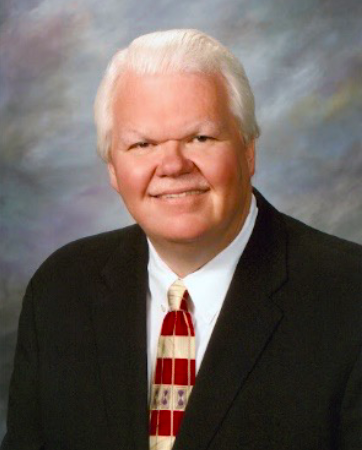
Clint Maun, nationally recognized for his innovative expertise in healthcare consulting, speaking and research, tells us about how to recruit, select, and retain hospital staff members.
How to prevent employee turnover
1. Don’t float new help for 30 days. Don’t pull them to different units and float them to another assignment just days later.
2. Stop the gamers. The people who constantly call in sick or have dead relatives. They pick up shifts when it's to their advantage. They’re the gamers.
3. Put in place mentors. They must be hand-picked to be a mentor and go through mentor training. The mentor is paid if the new employee stays.
4. Have seven interactions with the new employee in 30 days. Make a leadership grid of seven managers that will connect with the new employee. Have seven interactions with them in 30 days.
5. Put leadership rounds on steroids. Check-in with the patients. Check-in with new employees. Ask how they’re doing how you can help. Ask them questions about their lives. Get to know them—both professionally and personally. Show them that you notice them and appreciate them.
These are just some of the ways you can prevent employee turnover.
How to select new employees
Today there’s a process that goes on where people of a certain age believe it’s okay to take five job interviews and go to one, get a job, and ghost the other four.
To prevent ghosting, get your staff involved in communicating with the applicants before they come in. Have three or four staff members call them up, saying, “we’re looking forward to seeing you. I can’t wait to meet you. We’re so excited you’re coming for an interview.”
Stop putting it on the HR or recruiting person to keep these people online.
You may also want to consider interviews at night and on weekends. You should also consider interviews off-site. Some people don’t want anyone to see them come to your healthcare center because they work for the competitors, so you might need to interview them somewhere else.
Next, you need to use team-based interviews. If you’re hiring a nurse on a unit, the unit manager interviews them, and the unit manager’s boss interviews them. Two peers should also interview them.
To prevent employee turnover, get your staff involved in the interviews. You need to use behavioral interviewing questions. Instead of loud questions, you need to have pre-planned, set questions.
Recruiting employees
You’ve got to do strength-based ads, not weakness-based ads. Stop putting ads on Indeed or social media that say, “wanted: dozens, we’re desperate. We need the following positions.”
Never let it seem like you are desperate for new hires.
Your ads need to be strength-based.
First, interview your HQE. Those are called highly qualified employees. Interview the people who meet the following standards.
- Been there for at least six months
- Show up for work
- Show up on time
- Have all their in services done
- Willingly do something extra five times a year
- Float,
- Pick up shifts
- Are on committees
Get the group together and say, “you guys are good. We do not tell you that often enough. We spend all day long putting grease on the squeaky wheel, and we do not tell you you’re excellent. You are excellent people. We do not tell you that often enough. We are now defining you as highly qualified employees, and I want to ask you one question before you go. Why do you work for us?"
They’ll tell you all kinds of things. Write it all down, and tell them you’d like them to help you find other people. Let them know that you will instill a big staff referral bonus.
If you’re struggling with selecting, recruiting, and retaining hospital staff members, the above tips can help you get on the right track, hire the right people, and prevent employee turnover.
Download the Operation Uplift Team Organization Charter Today
To empower you in your focus to appreciate, nurture, and support your caregiver heroes, download a copy of Custom Learning’s Operation Uplift Team Organization Charter.
The charter provides all kinds of best practices to help you bring and create a positive culture where you work. It includes an assessment tool and dozens of best practices to improve morale, attitude, and self-care. It also addresses COVID fatigue and retention and includes a reference library of our Caregiver Heroes videos, TED talks, recommended reading, and more.
Now let’s go spread kindness care everywhere.
Please visit our YouTube channel for more information on this topic at https://www.youtube.com/user/Customlearningsue.
Everyone’s a Caregiver: Providing Education for Healthcare Workers
Everyone's Caregiver provides education to healthcare workers to improve their patients’ overall experience. We understand the time constraints in today's workplace and have customized microlearning videos to help you gain the necessary skills to be a better, more positive healthcare worker. Contact us today to see how we can help, or click here to learn more.
Are you interested in patient care? Check out these articles!
The 12 Imperatives of Caregiver Inspiration
What would be the value if you could learn the 12 imperatives of caregiver inspiration and do it all in ten minutes or less?
Caregiver inspiration is all about inspiring others and leading by. If you’re interested in the 12 different ways to provide caregiver inspiration, you’ve reached the right place.
Here’s everything you need to know about inspiring the caregivers and the hospital staff members around you.
The 12 Imperatives of Caregiver Inspiration
1. Inspire 5-Star Patient Kindness
Inspire patient kindness by telling stories of your contribution to others that go above and beyond.
When you tell a story, it captures people’s imagination. It’s possible, supportive, and can help them through difficult times.
2. Selflessness
One question that will guarantee your role as an inspirational leader is: “am I more concerned about myself or others?”. When you’re concerned about yourself, it’s about ego, but when you’re concerned about others, it’s selfless.
When you show concern about others, you focus on service to others.
3. Your Staff Members Are Stars
If you want your people to perform like stars, you must first help them see themselves as stars. You must believe in them. You must bring out the confidence of people who struggle with low self-esteem.
Show them that you care about them and believe in them.
4. Lead By Example
“Example is not the main thing in influencing others. It is the only thing.”
5. Lead WIth Purpose
People want to know ‘the why’ behind ‘the how.’ You need to stand up for your values and your beliefs and do just that - lead with purpose.
6. Lead By Wandering Around
Find time every day as a leader to check in with your people. Be curious about how they’re doing. Ask them questions about their lives and be there for them.
Be a brilliant conversationalist by listening to them and talking about their lives.
7. Notice, Recognize and Appreciate
The number one reason people leave their jobs is that they don’t feel valued and appreciated.
Remember, things that get recognized and rewarded get repeated.
8. Embrace Humor in the Workplace
The team that plays together stays together. The more we can create sticky, humorous relationships between colleagues, the better.
9. Lead Inspiring Meetings
Always open meetings with good news.
Have everybody share something positive that has happened in their lives, personal or professional.
End every meeting with ‘good of the patient.’ Invite people to share the best idea or insight that will enhance service to the patient.
10. Have a Good Attitude
“Based upon our attitude, we can bring joy or misery.” Be positive, and your staff members will be positive too.
11. Perpetually Motivate Your Caregiver Heroes
Motivate your caregivers. Have them create five-minute videos about what inspires them.
12. “We cannot do all the good the world needs, but the world needs all the good that we can do.”
Caregiver inspiration is about trying to do good. Always.
Download the Operation Uplift Team Organization Charter Today
To empower you in your focus to appreciate, nurture, and support your caregiver heroes, download a copy of Custom Learning’s Operation Uplift Team Organization Charter.
The charter provides all kinds of best practices to help you bring and create a positive culture where you work. It includes an assessment tool and dozens of best practices to improve morale, attitude, and self-care. It also addresses COVID fatigue and retention and includes a reference library of our Caregiver Heroes videos, TED talks, recommended reading, and more.
Now let’s go spread kindness care everywhere.
Please visit our YouTube channel for more information on this topic at https://www.youtube.com/user/Customlearningsue.
Everyone’s a Caregiver: Providing Education for Healthcare Workers
Everyone's Caregiver provides education to healthcare workers to improve their patients’ overall experience. We understand the time constraints in today's workplace and have customized microlearning videos to help you gain the necessary skills to be a better, more positive healthcare worker. Contact us today to see how we can help, or click here to learn more.
Are you interested in patient care? Check out these articles!
How to Inspire, Motivate, and Engage Caregivers
Do you know how to inspire, motivate, and engage your hospital staff members?
As the workplace is recovering from the pandemic, how do you, as a leader, inspire resilience, agility, teamwork, and positive thinking?
When the pandemic began, it was evident that all we could do as educators was to get out of the way because healthcare professionals had so much to do.
During this time, leaders recognized that there was a need to inspire caregivers at every level during these challenging times.
Here’s how.
Creating Positive Videos to Inspire, Motivate, and Engage Caregivers
To inspire your caregivers, record a five-minute video about delivering kindness care to patients, peer care for each other, self-care for yourself, and leadership nuggets of wisdom.
You can use these videos in different ways:
- Share a video at a daily meeting or patient experience meeting.
- Watch the videos and identify habits you like.
- Create a contest and get points every day if you practice one of those habits.
Fifteen minutes a day of watching and sharing these videos gives you 90 hours a year to inspire others and be inspired.
To inspire, motivate, and engage your caregivers, watch positive videos that touch your heart and inspire your soul.
Listen to people with positive attitudes that inspire you to be better. Think about what inspires you and how you can share that with other people.
Remember: it takes 21 days to form a habit and 90 days to change a lifestyle. Investing 15 minutes a day watching, listening, and discussing these ideas with your peers gives you 90 hours a year to inspire and be inspired.
How to access our videos
You can access these videos in two ways:
- Type in “Caregiver Heroes” on YouTube.
- Download our “Everyone’s a Caregiver” app and self-register from your smartphone, tablet, or desktop. You’ll have access to these videos anytime, anywhere.
Just a few noteworthy people who are in these videos include:
- LeAnn Thieman, co-author of two books
- Marcus Engel, an inspirational speaker
- David Irvine
By creating and watching positive videos, you can inspire your caregivers, which will lead to better patient care. Lead by example and encourage them to have a positive attitude - even when facing challenges.
Videos that touch your heart and inspire your soul can do so much for you, your team, and your patients. Let’s get inspired today!
Download the Operation Uplift Team Organization Charter Today
To empower you in your focus to appreciate, nurture, and support your caregiver heroes, download a copy of Custom Learning’s Operation Uplift Team Organization Charter.
The charter provides all kinds of best practices to help you bring and create a positive culture where you work. It includes an assessment tool and dozens of best practices to improve morale, attitude, and self-care. It also addresses COVID fatigue and retention and includes a reference library of our Caregiver Heroes videos, TED talks, recommended reading, and more.
Now let’s go spread kindness care everywhere.
Please visit our YouTube channel for more information on this topic at https://www.youtube.com/user/Customlearningsue.
Everyone’s a Caregiver: Providing Education for Healthcare Workers
Everyone's Caregiver provides education to healthcare workers to improve their patients’ overall experience. We understand the time constraints in today's workplace and have customized microlearning videos to help you gain the necessary skills to be a better, more positive healthcare worker. Contact us today to see how we can help, or click here to learn more.
Are you interested in patient care? Check out these articles!
How to Fix Your Attitude and Defeat Negativity

Do you, or any of your hospital staff members, need to fix your attitude?
Do you ever wonder just how much a positive attitude contributes to creating a healing environment in healthcare?
A positive attitude plays a massive role in every hospital. There’s an old cliche, “it’s your attitude, not your aptitude, that determines your altitude.”
Well, cliches are cliches for a reason - because there’s wisdom in there.
Attitude matters.
Here’s why.
Why You Should Fix Your Attitude in a Hospital Environment
As a leader, it’s your responsibility to fix your attitude so that you shine with positivity.
Being positive all the time - especially in a hospital environment - isn’t easy. But as a leader, it’s your job to inspire others and show positivity whenever you can.
When you fix your attitude and exude positivity in a hospital environment, your staff members will reflect it. Your staff members will then reflect it on their patients.
Your attitude can completely change a patient’s (and staff member’s) experience.
Positive Books Can Nourish the Soul
There are some great positive books leaders can read that inspire, educate, and nourish the soul. One book, in particular, is called ‘Nobody’s Home’ by Thomas Edward Gass.
The book tells a story about how Gass grew up with a single mother.
He went to seminary college, and when he graduated, he decided to travel the world. As he traveled, he lost touch with his mother. After receiving word that she was in her last few days on her deathbed, he returned to spend those days with her. When she passed away, he began working in a nursing home out of guilt and atonement.
Gass tells the story of the loneliness, friendships, hard work, and laziness of the communities that form in a skilled nursing facility.
His most profound sentence in the entire book was:
“Based upon our attitude, we can bring joy or misery.”
Bring Joy Everywhere You Go
Working in a hospital isn’t easy. From patient satisfaction to hospital ratings to ensuring employee morale is up, being a leader in health care has its struggles.
But when you’re a leader, you have to do all you can to promote a culture of positivity. You must lead by example.
Fix your attitude, and your attitude will reflect on everyone around you.
Remember: you can bring joy or misery wherever you go.
To keep a positive attitude, we recommend reading positive books that inspire and educate. We also suggest requesting a copy of our Operation Uplift Team Charter.
Download the Operation Uplift Team Organization Charter Today
To empower you in your focus to appreciate, nurture, and support your caregiver heroes, download a copy of Custom Learning’s Operation Uplift Team Organization Charter.
The charter provides all kinds of best practices to help you bring and create a positive culture where you work. It includes an assessment tool and dozens of best practices to improve morale, attitude, and self-care. It also addresses COVID fatigue and retention and includes a reference library of our Caregiver Heroes videos, TED talks, recommended reading, and more.
Now let’s go spread kindness care everywhere.
Please visit our YouTube channel for more information on this topic at https://www.youtube.com/user/Customlearningsue.
Everyone’s a Caregiver: Providing Education for Healthcare Workers
Everyone's Caregiver provides education to healthcare workers to improve their patients’ overall experience. We understand the time constraints in today's workplace and have customized microlearning videos to help you gain the necessary skills to be a better, more positive healthcare worker. Contact us today to see how we can help, or click here to learn more.
Are you interested in patient care? Check out these articles!
How to Lead Inspiring Meetings
Do you hold inspiring meetings?
Are you ready to stop letting the grumps and whiners dominate your meetings and perpetuate your misery?
Most people dread meetings. Sometimes you may schedule meetings only to have no one show up.
What does that say about your meetings?
Are they boring? Do employees feel as if meetings are negative?
If you’re struggling to hold meetings that are not only inspiring but helpful to your hospital staff members, read on.
It’s time to embrace the ‘8 Attributes of Inspiring Meetings.’
The 8 Attributes of Inspiring Meetings
1. Open with good news.
Instead of letting people start with complaints, go around the room and let everybody share something positive that has happened in their life.
It can be something that is going on personally in their life or on the job. It could be in the last week, two weeks, last month - anything. Opening with positivity starts a meeting off on a good note.
2. Report and communicate.
Report about everything you know and can report on.
Remember: in the absence of keeping your staff well-informed, rumors occur. And nothing good ever comes from rumors.
Here’s a tip: open a note on your smartphone. Start collecting and noticing things.
When you meet with a physician, attend a webinar, or attend a management meeting, collect information so that you can share it with your people.
3. Educate.
If you’ve got a 30-minute meeting, spend five minutes helping your people learn something. If it’s a one-hour meeting, spend ten minutes.
Here are some ideas:
- Talk about product knowledge
- Bring in a physician to educate on a subject
- Bring in a colleague from another department
- Share a TED talk video
- Share a Caregiver Heroes video on YouTube
4. Share your power.
Every leader has a decision to make or implement.
You will make better decisions if you let your people who do the work have a say.
Here’s a tip: the next time you interview a prospective employee, allow at least three of their peers to interview them.
Allowing peers to interview people is a fantastic way to get engagement. It’s also an excellent way for interviewers to gauge their future colleagues and vice versa.
5. Play and have fun.
Be silly. Have fun. Lead with humor!
Meetings are an excellent excuse to have fun. For example, have a ‘bring a cookie to work’ day.
Better still, bring a chocolate chip cookie to work for everybody.
Sing a song - do something silly. Make time at every opportunity to have a little bit of fun.
6. Notice and appreciate.
Make sure you make a point of acknowledging somebody for something. Show that you appreciate employees.
Here’s one idea: ‘Cheers for Peers’. Have employees take turns honoring anybody they want at the meeting.
7. Summarize who will do what, by when, and how.
Are you getting tired of hearing people say a meeting was a waste of time?
When you summarize all the actions employees took and their decisions, it gives everybody a sense of accomplishment, achievement, and accountability.
8. Close with ‘good of the patient.’
Go around the room and let everybody share what the best takeaway was from the meeting.
For some people, this may be the first time in their life they’ve ever left a meeting knowing that they learned something positive for the good of the patient.
Key Recommendations to Lead Inspiring Meetings
To lead inspiring meetings, let's follow these key recommendations:
1. Lead meetings that people want to attend. Lead with purpose.
2. Practice the eight attributes of an inspiring meeting and put them to work for you.
Download the Operation Uplift Team Organization Charter Today
To empower you in your focus to appreciate, nurture, and support your caregiver heroes, download a copy of Custom Learning’s Operation Uplift Team Organization Charter.
The charter includes an assessment tool and dozens of best practices to improve morale, attitude, and self-care. It also addresses COVID fatigue and retention and includes a reference library of our Caregiver Heroes videos, TED talks, recommended reading, and more.
Now let’s go spread kindness care everywhere. For more information on this topic, please visit our YouTube channel at https://www.youtube.com/user/Customlearningsue.
Everyone’s a Caregiver: Providing Education for Healthcare Workers
Everyone's Caregiver provides education to healthcare workers to better improve their patient's overall experience. We understand the time constraints in today's workplace and have customized microlearning videos to help you gain the necessary skills to be a better, more positive healthcare worker. Contact us today to see how we can help, or click here to learn more.
Are you interested in patient care? Check out these articles!
How to Connect With Humor at the Workplace
If you don't, you could be missing out on some great connections with your employees.
Laughter, humor, and fun in the workplace are critical to employee and patient satisfaction.
If you did a Google search about humor in the workplace, you'd find over 40,000,000 listings. There is a lot of valuable information on the subject - and there's a reason why!
Why It's So Important to Connect With Humor in the Workplace
When we connect with humor, people become friends and create relationships that help improve the workplace environment.
Relationships help people stay at work - they help with employee retention and make employees happier, more productive, and more willing to come to work every day.
Work matters - but the relationships with the people you work with matter too.
Loyalty at work hasn't come to an end. It's been replaced with loyalty to friends.
When you connect with humor at work, it helps people get to know their co-workers more personally.
One exercise to have fun and connect with people at work is to bring their baby photos. Put a number on the front and a name on the back. Have a contest to guess who is who. It's a great way to have a little bit of fun.
You can also choose a day of the week and call it 'Fun Day.' Just have fun!
Remember: the team that plays together, laughs together, and is silly together, stays together.
Create Meaningful Relationships With the People You Work With
When you connect with humor and build relationships with the people you work with, you can significantly improve your everyday life in the workplace.
Inspire the best in every employee by building relationships with them. Relationships help make the workplace fun - they make people excited to go to work, reflecting how they treat their patients.
Remember: hospital staff members play a vital role in a hospital. Great employee satisfaction means excellent patient satisfaction.
Here are reasons why you should connect with humor in the workplace:
- The whole point of playing together is to create excellent relationships that help people appreciate each other and stay together.
- Loyalty at work hasn't ended, but it is replaced by loyalty to one's friends in the workplace.
- Play games at work and have fun.
- Always remember the team that plays together stays together.
Now let's go spread kindness care everywhere.
Download the Operation Uplift Team Organization Charter Today
To empower you to appreciate, nurture, and support your caregiver heroes, download a copy of Custom Learning's Operation Uplift Team Organization Charter.
The charter includes an assessment tool and dozens of best practices to improve morale, attitude, and self-care. It also addresses COVID fatigue and retention and consists of a reference library of our Caregiver Heroes videos, TED talks, recommended reading, and more.
Now let's go spread kindness care everywhere. For more information on this topic, please visit our YouTube channel at https://www.youtube.com/user/Customlearningsue.
Everyone's a Caregiver: Providing Education for Healthcare Workers
Everyone's Caregiver provides education to healthcare workers to better improve their patient's overall experience. We understand the time constraints in today's workplace and have customized microlearning videos to help you gain the necessary skills to be a better, more positive healthcare worker. Contact us today to see how we can help, or click here to learn more.
Are you interested in patient care? Check out these articles!
Show Employee Appreciation by Noticing, Recognizing, and Appreciating
Studies tell us that the number one reason people quit their jobs is because they don't feel valued, appreciated, or recognized.
So how do you address the desire by most employees to feel needed, noticed, and known?
"There's no limit to what you can accomplish if you don't care who gets the credit.” - President Reagan
As a leader, your role is not to take credit for the work. It's to acknowledge people who do.
4 Ways to Practice Employee Appreciation
There are so many things you can do as a leader to practice employee appreciation. Here are four of them.
- Be timely. Show appreciation right away. Don't save it up for the Christmas party - acknowledge people when you see them doing something good.
- Be spontaneous. If you're walking down the hallway and you notice a nurse being nice to a family member, point it out to them!
- Be specific. Saying "everybody did a good job" doesn't count. Instead, say something like, "the way everybody got together and organized that test drive-through in 24 hours was amazing.” Now that's a compliment!
- Gear it towards the individual. Acknowledge each employee differently.
Get to Know Your Employees
Get to know your employees by being curious about them.
When you get to know your employees, you can show appreciation for them in ways that will resonate with them.
On page 3 of our Uplift Charter, there is a “my list” form. We recommend giving this out to every new hire because it asks questions like "what are your favorite sports?"
Answers to simple questions like these help you get to know each employee on a more personal level.
When you get to know employees, you can show appreciation towards them by honoring them with something that matters to them, which is a great way to inspire the best in every employee.
For example, if you know that one employee loves baseball, you can acknowledge them for something they’ve done by giving them a baseball cap or jersey. If they're bowlers, give them bowling ball polish or bowling ball passes. Give them something that they can use.
We need to appreciate the uniqueness of every individual.
Writing thank-you notes has always been a great way to appreciate your people. What I recommend you do is mail it to their home, so when they're opening their mail and their bills, there'll be that little gift from an angel, from you.
Always remember the Greatest Management Principle: What gets recognized and rewarded gets repeated.
To summarize what you should take away from this article about employee appreciation, remember these six things:
1. There's no limit to what people can accomplish if you don't care who gets the credit.
2. The reason people leave jobs is because they don't feel appreciated.
3. Practice the four attributes to notice and appreciate.
4. Get to know your employees.
5. Send thank you cards to people's homes
6. The Greatest Management Principle: "what gets recognized and rewarded gets repeated.”
Download the Operation Uplift Team Organization Charter Today
To empower you in your focus to appreciate, nurture, and support your caregiver heroes, download a copy of Custom Learning’s Operation Uplift Team Organization Charter.
The charter includes an assessment tool and dozens of best practices to improve morale, attitude, and self-care. It also addresses COVID fatigue and retention and includes a reference library of our
Caregiver Heroes videos, TED talks, recommended reading, and more.
Now let’s go spread kindness care everywhere. For more information on this topic, please visit our YouTube channel at https://www.youtube.com/user/Customlearningsue.
Everyone’s a Caregiver: Providing Education for Healthcare Workers
Everyone's Caregiver provides education to healthcare workers to better improve their patient's overall experience. We understand the time constraints in today's workplace and have customized microlearning videos to help you gain the necessary skills to be a better, more positive healthcare worker. Contact us today to see how we can help, or click here to learn more.
Are you interested in patient care? Check out these articles!
How to Be a Curious Leader: Lead by Wandering Around
Every healthcare organization struggles with creating a culture driven by authentic two-way communication versus rumor because rumor can ruin morale and teamwork.
So, what’s the antidote? Well, it’s as simple as this: be a curious leader and lead by wandering around.
A Great Leader is a Curious Leader
A great leader is a curious leader - they may look like they are wandering around, but they're communicating and engaging.
By taking the time to communicate and engage with others, ask questions, and spend time with people, you can help them. When you do this, you show the message that we’re in it together.
There’s no one more important than anybody else. Everyone is a caregiver, and we’re in this together.
According to Bev Kaye, who wrote a series of books on employee retention in her book “Love ‘Em or
Lose ‘Em,” 50% of workforce satisfaction comes from the employees relating to their boss”.
To prevent your hospital staff members’ moods from turning blue, give them a chance to let you know what they do. Be a curious leader.
Lead By Walking Around
People want to be needed, noticed, and known. They want you to see them, which is why we recommend that you embrace the concept of L-B-W-A - lead by walking around - about 10% of your time.
Many bosses say that their office door is always open, but let’s face it - most employees would never go into a boss’s office because they are intimidated.
So what do leaders talk about when they wander around?
Walt Whitman has some great advice, which is to “be curious.” Be curious about what’s going on in your staff members’ lives. Ask them how their kids are doing, how their weekend was, or anything else about their life.
The 3 Different Types of Communicators
Be curious and not judgmental because the minute your people think you’re wandering around to check up on them, they’re going to head for the hills. They’re not going to level with you. This is where communication comes in.
There are three different types of communication in life. Which one are you?
- The egotist: Egotists like to talk about themselves. They go on and on and on.
- The bore: These people talk about things that have no interest to anyone.
- The brilliant conversationalist: Someone who talks to you about you.
Remember to lead by example. Be a curious leader and a brilliant conversationalist. Ask people about their lives. Ask them how they are doing - because when you lead by walking around, you learn by walking around.
Some Key Ideas to Take Away
- 50% of workforce satisfaction comes from how employees relate with their leader, their boss, that’s you.
- To prevent your people’s mood from turning blue, give them a chance to let you know what they do.
- Lead by walking around.
- Be curious, not judgmental.
- Be aware of the three types of communicators. And above all, be a brilliant conversationalist.
Download the Operation Uplift Team Organization Charter Today
To empower you in your focus to appreciate, nurture, and support your caregiver heroes, download a copy of Custom Learning’s Operation Uplift Team Organization Charter.
The charter includes an assessment tool and dozens of best practices to improve morale, attitude, and self-care. It also addresses COVID fatigue and retention and includes a reference library of our
Caregiver Heroes videos, TED talks, recommended reading, and more.
Our next tutorial in this is “Lead By Wandering Around.”
Now let’s go spread kindness care everywhere. For more information on this topic, please visit our
YouTube channel at https://www.youtube.com/user/Customlearningsue.
Everyone’s a Caregiver: Providing Education for Healthcare Workers
Everyone's Caregiver provides education to healthcare workers to better improve their patient's overall experience. We understand the time constraints in today's workplace and have customized microlearning videos to help you gain the necessary skills to be a better, more positive healthcare worker. Contact us today to see how we can help, or click here to learn more.Are you interested in patient care? Check out these articles!
How to Lead With Purpose and Value

Do you lead with purpose?
Are values and purpose things that you bring with you to work every day to inspire, motivate and encourage other hospital staff members?
What is all the fuss about values and purpose, anyway? And how important is it for leaders to talk about values and purpose?
Well, there’s a reason why most successful leaders leverage purpose as such a powerful force for good. Here’s why.
Why is it So Important to Lead With Purpose?
When it comes to the patient experience and patient satisfaction, value and purpose trump all.
"People don't buy what you do. They buy why you do it.”
—Simon Sinek
Actions speak louder than words, but the reasoning behind the action always resonates with people.
Remember: people don't buy action. They buy the reason behind the action. And it is the purpose behind the action that matters.
We have to remember that a hospital setting isn’t retail. It’s not manufacturing, and it’s not agriculture either.
In healthcare, we change and save people’s lives every day. We show compassion at the end of people’s lives, and we touch people’s lives. We need to remind people why this is so important.
Kindness Care, Everywhere
Our vision at Custom Learning is: “Kindness care, everywhere.” It is a healthcare leader’s role to remind people not just of this vision but also to stress the importance of creating relationship-based cultures of healing kindness.
“When you understand the why any how is possible.”
—Friedrich Nietzsche
When we lead with purpose and lead by example, we instill the values of giving. We give to others, and we also help others. That is our purpose as healthcare leaders and healthcare professionals.
When we give to others, we share our love, kindness, and support. We show others that through kindness, anything is possible. With these core values and concepts in mind, we can empower and support both patients and caregiver heroes every single day.
Three Key Ideas to Live By in Healthcare
Healthcare workers should strive to live by these key ideas every day:
1. People don’t buy what you do. They buy why you do it. Make sure you make it clear.
2. When you understand the why, any how is possible
3. “We make a living by what we get, but we make a life by what we give.”
Download the Operation Uplift Team Organization Charter Today
To empower you in your focus to appreciate, nurture, and support your caregiver heroes, download a copy of Custom Learning’s Operation Uplift Team Organization Charter.
The charter includes an assessment tool and dozens of best practices to improve morale, attitude, and self-care. It also addresses COVID fatigue and retention and includes a reference library of our Caregiver Heroes videos, TED talks, recommended reading, and more.
Our next tutorial in this is “Lead By Wandering Around.”
Now let’s go spread kindness care everywhere. For more information on this topic, please visit our YouTube channel at https://www.youtube.com/user/Customlearningsue.
Everyone’s a Caregiver: Providing Education for Healthcare Workers
Everyone's Caregiver provides education to healthcare workers to better improve their patient's overall experience. We understand the time constraints in today's workplace and have customized microlearning videos to help you gain the necessary skills to be a better, more positive healthcare worker. Contact us today to see how we can help, or click here to learn more.
Are you interested in patient care? Check out these articles!
How to Lead By Example and Model Behavior in a Hospital

Do you know how to model behavior and lead by example? Have you ever wondered why there are certain leaders you just want to follow and do whatever it takes to get their approval?
If you’re a leader in a hospital, it is critical to lead by example while doing your best to engage your hospital staff members and create patient satisfaction.
But what is that secret sauce? How does one person influence and motivate others?
The secret sauce is showing kindness and care and the relationships you build.
Strong relationships with hospital staff members help leaders get things done. But how do you model this behavior?
You Lead By Example
How you model your behavior determines how people see you. Remember: the speed of the leader is the speed of the team.
When you are kind to staff members, patients, and everyone in between, people will notice. Staff members, in particular, will start to model this type of behavior.
What you know and care about, and what you do and care about, is what your people will do and care about.
By showing kindness and care to other staff members and patients alike, you can inspire the best in every employee. When you lead by example and model behavior full of kindness, your staff members will reciprocate this behavior, resulting in overall better staff satisfaction and patient satisfaction.
If serving is below you, then leadership is beyond you. We need to be servant leaders and examples to the people that we lead. We must truly inspire them to do better. When we model good behavior, it affects everyone around us. It will create better engagement with staff members, which will result in greater patient satisfaction and higher star ratings.
At the end of the day, kindness always wins.
"Example is not the main thing in influencing others. It is the only thing.”
Three Things to Consider When You Lead By Example
When you lead by example, there are certain things you should consider. Here are three things to think about if you are a leader in a hospital.
- We are attracted to leaders who model relationship engagement.
- The speed of the leader is the speed of the team.
- Being an example is not the main thing in influencing others. It is the only thing.
Download the Operation Uplift Team Organization Charter Today
To empower you in your focus to appreciate, nurture, and support your caregiver heroes, download a copy of Custom Learning’s Operation Uplift Team Organization Charter.
The charter includes an assessment tool and dozens of best practices to improve morale, attitude, and self-care. It also addresses COVID fatigue and retention and includes a reference library of our Caregiver Heroes videos, TED talks, recommended reading, and more.
Our next tutorial in this is “Lead With Purpose.”
Now let’s go spread kindness care everywhere. For more information on this topic, please visit our YouTube channel at https://www.youtube.com/user/Customlearningsue
Everyone’s a Caregiver: Providing Education for Healthcare Workers
Everyone's Caregiver provides education to healthcare workers to better improve their patient's overall experience. We understand the time constraints in today's workplace and have customized microlearning videos to help you gain the necessary skills to be a better, more positive healthcare worker. Contact us today to see how we can help, or click here to learn more.
Are you interested in patient care? Check out these articles!
- The Star Struck Factor
- How to Improve Your Hospital Ratings Using the Star Struck Factor
- How to Ask for a Referral in Healthcare: The Power of Patient Referrals
The Secret to Inspiring the Best in Every Employee

Inspiring employees is one of the best ways hospital staff members can ensure five-star service and great patient reviews.
But how do you do that?
It can be extremely difficult working in a hospital environment, particularly in today’s world. Most hospital staff members are experiencing burnout from COVID, and some staff members aren’t even getting the support they need from their leaders.
The best way to get great employee engagement is to do it through your leadership. Inspiring employees is one of the most important things a leader in a hospital can do - but it’s not easy.
How do you motivate employees who lack confidence and self-esteem?
The answer may surprise you!
Inspiring Employees is the Answer
We all have crosses to bear, and for about 80% of us, it’s low self-esteem and constantly questioning and doubting our judgment and abilities.
“Love what you do, and you’ll never work another day of your life.”
A lot of hospital staff members appreciate the privilege of serving others. They’re life-savers, and they work very hard, but not everybody loves their job or themselves, and that’s why we need leaders to do their best to inspire their employees.
If you want your people to perform like stars, you must first help them see themselves as stars. By inspiring employees, you can motivate them to live up to your positive expectations.
By showing employees affirmations and demonstrating great values and behaviors, you can inspire them to grow, develop, and do their jobs to the best of their abilities. You can inspire them to love their jobs.
A great leader helps improve an employee’s values, behaviors, professional habits, and practices. A great leader shows their employees the value they bring to their job.
A great leader believes in their people.
Believe in Your People
Hospital staff members are exposed to so much negativity. They need positive affirmations to help them get through their days. They need a leader who can inspire them through their actions.
Here are tips on how to inspire employees:
- Love what you do, and you’ll never work another day in your life.
- The challenge is not everybody loves their job or themselves, which is why we need you.
- If you want your people to perform like stars, you must first help them see themselves as stars.
Download the Operation Uplift Team Organization Charter Today
To empower you in your focus to appreciate, nurture, and support your caregiver heroes, download a copy of Custom Learning’s Operation Uplift Team Organization Charter.
The charter includes an assessment tool and dozens of best practices to improve morale, attitude, and self-care. It also addresses COVID fatigue and retention and includes a reference library of our Caregiver Heroes videos, TED talks, recommended reading, and more.
Now let’s go spread kindness care everywhere.
For more information on this topic, please visit our YouTube channel at https://www.youtube.com/user/Customlearningsue
Everyone’s a Caregiver: Providing Education for Healthcare Workers
Everyone's Caregiver provides education to healthcare workers to better improve their patient's overall experience. We understand the time constraints in today's workplace and have customized microlearning videos to help you gain the necessary skills to be a better, more positive healthcare worker. Contact us today to see how we can help, or click here to learn more.
Are you interested in-patient care? Check out these articles!
How to Improve Your Hospital Ratings Using the Star Struck Factor

Hospital ratings are vital to a hospital’s success.
Do you know your hospital’s rating? If you don't, it's time to step up your game and learn about the “Star Struck Factor.”
The Star Struck factor focuses on improving the patient experience in a hospital.
The patient experience is more important now than ever before. The COVID-19 pandemic instilled a lot of fear into people. As a result, many people now avoid going to hospitals altogether for fear of catching the virus, which is why it is crucial to start using the Star Struck Factor to reignite caregiver engagement and create a five-star experience.
How to Improve Your Hospital Ratings
A study done by the Alliance of Community Health Plans says that 42% of consumers feel uncomfortable going to a hospital for in-person medical treatment.
These statistics show us that now is the perfect time to reignite engagement and get hospital ratings up.
“You can’t go back and change the beginning, but you can start where you are and change the ending.”
C.S. Lewis
It’s time to regain lost ground and focus on growth. It’s time to set goals - and achieve them.
Goals are one thing, but what systems do you have in place to achieve those goals?
Focus On the Patient Experience
To improve hospital ratings, hospital staff members have to focus on the patient experience.
The patient experience is an essential part of patient care. By focusing your attention on the patient experience and patient engagement, you can hit that Star Struck Factor. You can also start getting hospital referrals, which will only help boost your ratings.
To get good hospital ratings, you have to understand how patients evaluate a hospital's care. What factors are they taking into consideration?
When a survey asks patients to rate the skill of the nurse or physician they dealt with, what do patients evaluate? What do they know about a doctor’s or nurse’s skills?
Patients focus on if a nurse or doctor was kind to them and if they showed interest.
The patient will never forget how they FELT about the experience. Was the doctor responsive? Did the nurse read the chart in advance? These are all small things that play a critical role in the patient experience.
Ask yourself this: What does the patient remember or understand better - the clinical treatment or their experience?
The answer to this will always be their personal experience.
When it Comes to Patient Care, Someone is Always Watching.
Not only is the patient watching you, not only is the center for medicare asking you to survey your patients, but the whole world is watching you.
There are now 18 websites that report your scores or allow patients to rate you. These websites get a million visitors a day. So your doctors’ ratings are there, and your hospital’s ratings are there as well.
It’s time to focus on the patient experience and patient care. Your hospital ratings depend on it.
Now let's go spread Kindness Care, Everywhere!
Everyone’s a Caregiver: Providing Education for Healthcare Workers
Everyone's Caregiver provides education to healthcare workers to better improve their patient's overall experience. We understand the time constraints placed in today's workplace and have customized microlearning videos to help you gain the skills you need to be a better, more positive healthcare worker. Contact us today to see how we can help, or click here to learn more.
For more information on this topic please visit our YouTube channel at https://www.youtube.com/user/Customlearningsue
Are you interested in patient care? Check out these articles!
Why Your Hospital’s Online Reputation is Important to its Success
How to Lead in the New Normal
The Importance of Having a Culture of Engagement
How to Improve Patient Feedback and Get Better Star Ratings

Consider this question: Why won’t patients give you honest patient feedback and tell you how they really feel about you while they’re under your care and control? Well, it’s because they’re under your care and supervision.
Think about it this way: Do you ever bother complaining about the food in a restaurant? Most people don’t, because what might happen to that food on the way back from the kitchen? There’ll be a new, invisible, moist crust.
Patients are very uncomfortable giving direct feedback. Nursing managers say this all the time, “I don’t get it. I talk with my patients, I ask how they’re doing, they say they love us, and then I get evaluation feedback, and they don't love us! What’s going on here?”.
When it comes to direct patient feedback, most people won't give you the truth. People are not comfortable being seen as a troublemaker.
Perception is deception. The way you think you’re doing may not be how your patients see you, which is why evaluations are so critical.
Five Questions to Ask About Patient Feedback
- Do you know your latest patient satisfaction scores?
- Do you know how the scores have changed since the previous report?
- What are the top two things your patients say that you do best?
- What are your top two patient dissatisfiers? What upsets your patients the most?
- Do the people who report to you know the number one dissatisfier for their patients?
These questions are critical to your success. If your hospital staff members don’t know the answers to these questions, then you won’t be able to move forward and improve your patient feedback or win back patients.
It’s your role as a leader to educate your people to know and inspire them to care.
“The speed of the leader is the speed of the team.”
The Importance of Star Ratings
Never underestimate the importance of star ratings. Consider the following:
- A rating of 1 or 2 is a Zone of Defection.
- A rating of 3 or 4 is a Zone of Indifference.
- A rating of 5 out of 5 is a Zone of Affection.
Star ratings are essential. When people are searching for services, they can filter their search by star ratings. If your hospital has a lackluster star rating or a poor online reputation, your patient intake will reflect this.
Getting five stars means consistently meeting or managing patients’ expectations with kindness, care everywhere, which should always be the goal.
A study done by PressGaney, the largest patient survey vendor in the United States, found that there is no profitability unless you’re rated a four out of four, which is five stars. It is very hard to have a positive margin if you don’t have a positive star rating, so keep that in mind.
Good Patient Feedback Gets Your Hospital Ahead
By engaging, shifting, and educating your hospital staff members to implement best practices, you can improve your patient feedback and star rating.
A one-point improvement in your overall hospital rating equals a .4% profit margin increase. These funds can help your hospital get ahead. As the patient experience improves, operating margins improve, and nurse turnover goes down.
The patient experience makes a difference, draws your people, and gives you a competitive advantage. By putting the right strategies in place to improve patient satisfaction, your hospital can reap the rewards.
Everyone’s a Caregiver: Providing Education for Healthcare Workers
Everyone's Caregiver provides education to healthcare workers to better improve their patient's overall experience. We understand the time constraints placed in today's workplace and have customized microlearning videos to help you gain the skills you need to be a better, more positive healthcare worker. Contact us today to see how we can help, or click here to learn more.
Are you interested in patient care? Check out these articles!
Why You Should Be Promoting Your Hospital As COVID-19 Compliant
The Importance of Having a Culture of Engagement
How to Ask for a Referral in Healthcare: The Power of Patient Referrals
Service Recovery in a Hospital is the Key to Patient Satisfaction

Hospital staff numbers must embrace a best practice called service recovery to achieve patient satisfaction: when you mess up, you fess up and dress up.
Service recovery goes a long way in creating a culture of kindness in a hospital. It allows hospital staff members to be more present, compassionate, and empathetic. Being present for a patient in their time of need and having a positive attitude by offering empathy, compassion, kindness, and love is the greatest gift we can give.
“Human presence is the cornerstone of empathy and the foundation of what it means to be human.”
- Marcus Engel
What if we all began every shift with kindness?
Remember: patients notice you. They are watching you. These are all reasons that we should consistently deliver kindness care everywhere.
Practice Service Recovery and Improve Patient Satisfaction by Embracing Complaints
Deal with complaints in a way that empowers everyone. A hospital should empower everyone to solve a complaint, prevent a complaint, or show human compassion. It’s about giving hospital staff members the discretion to give extra care when certain patients or situations require it. If you make a mistake, you have the control to do something to fix it and improve patient satisfaction.
Hospitals trust their employees with patients’ lives, which is why management should trust every one of the full and part-time employees at a facility to use their good judgment to keep patients happy.
Hospitals should authorize everyone to spend up to $10 per person, or $50 per person, per year to empower them to practice service recovery whenever possible to keep patients happy.
See Complaints as a Gift
Janelle Barlow wrote a book called A Complaint is a Gift. When we get feedback about things not going well, consider it a gift. It becomes an opportunity to fix the problem and make it better.
Remember: the flipside of lemon is lemonade. The flipside of every group of complaints is an opportunity to improve service.
Service recovery should never require managers’ pre-approval. Managers are in meetings, webinars, and seminars every day. Hospitals need to trust their staff members to use their good judgment, which is why creating a Performance Improvement Team and drafting a Service Recovery Policy can significantly help improve patient satisfaction and patient engagement.
Practice C.A.R.E
- Concur: Acknowledge a concern or complaint by saying, “thank you for bringing it to our attention.”
- Apologize: Say sorry without blame by saying, “I am so sorry, I apologize.”
- Respond: Tell your patients what you CAN do, not what you CAN’T do.
- Extended thanks: Say thank you for taking the time: “Thanks so much for bringing that to our attention.”
Appoint a team and create a Service Recovery Policy. Every three months, take a moment to find out what you learned and track trends. Spend half an hour in a classroom or meeting room and give people a chance to ask questions about the policy, sort things out in their mind, see what is working, what isn’t working, and improve from there.
Make Service Recovery a Powerful Part of Your Service Culture and Brand Promise
You have a brand in the community right now. Some of it is positive, and some of it is negative. Your brand is what you promise in your brochures and your website and what you tell people. You need to focus on improving your brand. Focusing on service recovery is the first step. As the Dalai Lama said, “Be kind whenever possible. It is always possible.”
Everyone’s a Caregiver: Providing Education for Healthcare Workers
Everyone's a Caregiver provides education to healthcare workers to better improve their patient's overall experience. We understand the time constraints placed in today's workplace and have customized microlearning videos to help you gain the skills you need to be a better, more positive healthcare worker. Contact us today to see how we can help, or click here to learn more.
Are you interested in patient care? Check out these articles!
How to Lead in the New Normal
How to Win Back Every Single Patient
The Importance of Having a Culture of Engagement
7 Ways to Empower Hospital Staff Members
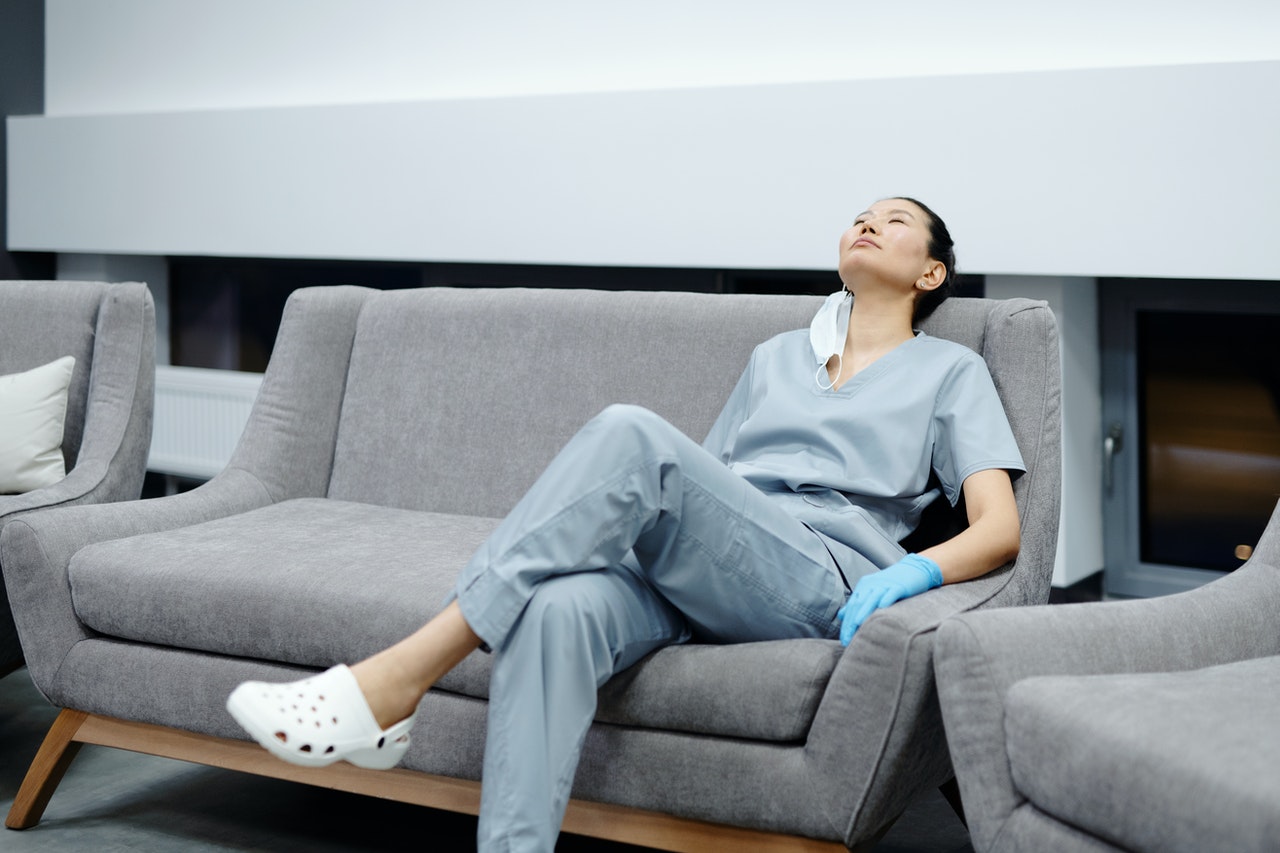
How do you empower hospital staff members?
In today’s healthcare world, most hospital staff members experience an abundance of stress - from an onslaught of new patients due to COVID-19, to strict new guidelines, to new health measures. A lot of people working in hospitals are also experiencing burnout.
When staff members experience burnout, it has a direct effect on the patient experience.
So how do we empower staff members to do their job, be positive, and improve the patient experience?
We do it through empowerment. Here are seven ways to do it.
7 Ways to Empower Hospital Staff Members Using the Empowerment Bundle
1. Service Recovery
When staff members work together to execute excellent patient care, the environment changes.
All employees must make it a part of their daily practice to “mess up, fess up, and dress up.” When we make this a part of our practice, habits, and culture, it displaces the old behaviors and becomes our cultural practice.
When we make a mistake, we have to be accountable for it and do our best to rectify it and learn from it. That’s what service recovery is all about.
2. Six-Foot Rule
In the days of COVID-19 and social distancing, all staff members must abide by the six-foot rule to keep a safe distance between themselves, other staff members, and patients.
Following the six-foot rule not only respects the people and patients you are working with but shows them that the hospital is doing its part to protect patients.
3. Managing Up
Managing up means saying something significant about another caregiver when you hand them off to another patient.
By doing this, the patient can rest assured that the staff member caring for them will do their best to provide the best service possible.
4. Platinum Live-it
The platinum live-it rule emphasizes the importance of following up. Whether you are following up with patients, other hospital staff members, a doctor, or another superior, doing so will improve the overall experience for both patients and staff members.
5. No Pass Zone
When you see an opportunity to help a fellow staff member or patient, do not pass it up. A culture of engagement builds off of teamwork. Do not pass up the opportunity to help someone in need.
6. License to Silence
Everyone is empowered to speak with a kinder, gentler voice, fix the noise, and honor and recognize quiet time, healing time, or hush time in the afternoons or evenings.
Never underestimate the power of silence in patient care. A patient’s perception of silence is more important in the day than it is sleeping at night.
As a caregiver, this is something you must always remember and practice.
7. Freedom to Clean
You are never too important to pick up something dirty on the floor, whether dirty bandages, dirty paper, or anything else. Think about how you keep your desk organized. Patients can see it, so it looks professional.
With the freedom to clean, we all have the empowerment to clean as we go.
Lead in the New Normal By Empowering Your Hospital Staff
It’s not easy to lead in the new normal. The above seven best practices of the empowerment bundle can help improve patient satisfaction in a hospital during these difficult times. They can also improve the morale of all your hospital staff.
By following all these best practices, everyone can train up. Everyone can be part of the solution.
Reimagining Healthcare Engagement Summit
In June, we hold a special one-day summit called “Reimagining Healthcare Engagement,” which will be 100% live streaming. Register to learn more about how to refresh the workplace through resilience, agility, and kindness.
Everyone’s a Caregiver: Providing Education for Healthcare Workers
Everyone's a Caregiver provides education to healthcare workers to better improve their patient's overall experience. We understand the time constraints placed in today's workplace and have customized microlearning videos to help you gain the skills you need to be a better, more positive healthcare worker. Contact us today to see how we can help, or click here to learn more.
Are you interested in patient care? Check out these articles!
Why Your Hospital’s Online Reputation is Important to its Success
A Positive Attitude is Key to Great Patient Care
Non-Verbal Communication is the Key to Great Patient Care
The Importance of Having a Culture of Engagement
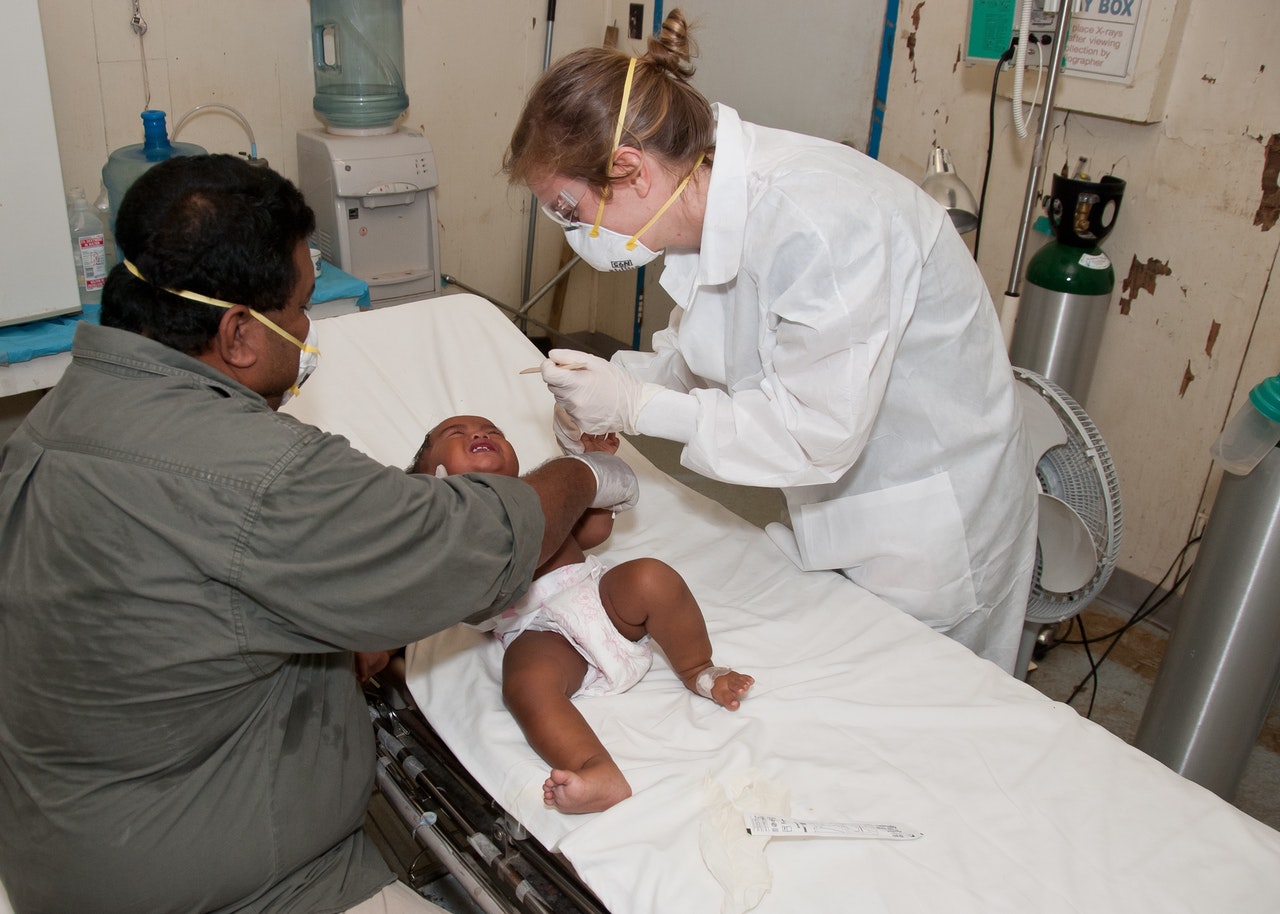
Having a culture of engagement is a critical factor in achieving a five-star experience. It is also the biggest impediment to moving to a five-star experience.
It takes three years to change a culture, and it all starts with taking care of your caregiver.
To Create a Culture of Engagement, Start With Your Caregivers
All hospital staff members play a vital role in a hospital. According to PressGaney, a 1% change in employee morale equals a 2% change in the patient experience. Happy employees equal happy customers.
Remember: disgruntled employees result in unhappy patients.
Service Recovery
To create a culture of engagement, we must also practice service recovery. All employees should make it a part of their daily practice that when they “mess up, they fess up, and dress up.”
When we make this a part of our practice, habits, and culture, it displaces the old behaviors and becomes our cultural practice.
Culture change means consistently practicing new behaviors. It takes three years for a hugely complex organization to make these changes, which is why we have to stay focused on it.
If we want empowerment, we’ve got to create a culture of engagement. You have to continue to educate leadership, educate the frontline, and hardwire best practices. It’s all about the execution of the strategy.
The Attitudes of Engagement
Did you know that there are five types of attitudes working in hospitals?
- Superstars: 3% of the workplace.
- Winners: 20% - they come early, they stay late, they’re positive, they want to get ahead, and they want to make a difference.
- Grinners: 50% - they are just sitting on the fence. They’re here for a paycheck. They're not here to change the world,
- Whiners: 25% - everything’s wrong, nothing’s right. They want something for nothing. They do as much as they can to do as little as they can. They’re negative, and they’re often proud of their negativity.
- Slugs: Between 2 and 10% of the workforce - they shouldn’t be there, but we keep them there because they’re live, warm bodies.
It is crucial to have a positive attitude in health care. To create a culture of engagement that brings about a five-star experience, we have to work on who we have employed. The slugs have to go. Whiners have an opportunity to change their behaviors, which is why we have something called corrective action coaching. We can help the grinners turn into winners through education and culture change.
What do you think is your attitude of engagement?
Never Be Silent About Negative Behaviour
As a leader, your role is to understand your employees, where they fit in their roles, and how you can create a culture of engagement. Silence about negative behavior implies approval of negative behavior.
It is your role to notice these things and have confidential coaching sessions about them. Silence, when it comes to this issue, means consent. You need to use your code of conduct as a living tool to choose staff better. It should orient staff better, educate staff better, recognize and appreciate staff better, do better performance evaluations, and to above all, have a more thoughtful tool for discipline.
Negative behavior is not complementary to wellness and healing.
The Service Empowerment Leadership Course
A hospital environment must have a great leader, so it is vital to allow everybody to get into a classroom and learn how to be a leader, more than just being a manager.
We call this the Service Empowerment Leadership Course.
Reimagining Healthcare Engagement Summit
In June, we are holding a special one-day summit called “Reimagining Healthcare Engagement,” which will be 100% live streaming. Register to learn more about how to refresh the workplace through resilience, agility, and kindness.
Everyone’s a Caregiver: Providing Education for Healthcare Workers
Everyone's a Caregiver provides education to healthcare workers to better improve their patient's overall experience. We understand the time constraints placed in today's workplace and have customized microlearning videos to help you gain the skills you need to be a better, more positive healthcare worker. Contact us today to see how we can help, or click here to learn more.
Are you interested in patient care? Check out these articles!
How to Lead in the New Normal
Non-Verbal Communication is the Key to Great Patient Care
How to Win Back Every Single Patient
Why Your Hospital’s Online Reputation is Important to its Success

Your hospital’s online reputation is vital to its success, and the key to having an excellent online reputation is ensuring that there is always a great patient experience.
Reputation.com did a study of 4800 hospitals. They found that it will bring your scores up by 17% if you have a good online reputation.
On the other hand, if you have a poor online reputation, it’s three times more likely to fall. Your ratings have become a self-fulfilling prophecy, which is why you need to start thinking about the patient experience and how to improve it.
Using the Patient Experience to Improve Your Online Reputation
Have you ever wondered why patients won’t tell you how they honestly feel about you while they’re under your care and control?
Think about it this way: do you bother complaining about the food in a restaurant? Most people don’t because they fear what might happen to that food on the way back from the kitchen. There’ll be a new, invisible, moist crust.
Patients are very uncomfortable giving direct feedback. People are not comfortable being seen as a trouble maker. Remember: perception is deception. The way you think you’re doing may not be the way your patients see you. They’re very uncomfortable giving you that honest, direct feedback, which is why evaluations are so essential to understand the patient experience.
Five Questions to Ask Yourself About the Patient Experience
- Do you know your latest patient satisfaction scores?
- Do you know how the scores have changed since the previous report? How did they change in the last quarter?
- What are the top two things your patients say that you do best?
- What are your top two patient dissatisfiers?
- What is your number one dissatisfier, and what are you doing to eliminate it?
“The speed of the leader is the speed of the team.”
It’s your role as a leader to educate your staff and inspire them to care.
Why Five-Star Ratings Are so Important to Your Online Reputation
A five-star rating is where you will find your loyalty. Five-star ratings keep and win patients back.
To get five-star ratings, you have to consistently meet or manage patients’ expectations with kindness and care everywhere, which should always be the goal.
What makes the difference, and what gives you a competitive advantage, is the patient experience. As the patient experience improves, operating margins improve. And as patient experience improves, nurse turnover goes down.
How to Get a Five-Star Patient Experience
1. Patient Engagement
Internal customer experience matters. One great way to improve patient engagement is through “chat time.”
One of the best things that you can do is make time to sit with a patient. This daily “chat time” touches patients and shows them that you care. When it comes to patient engagement, relationships come first, and business second.
Ask your patients about their kids or their grandkids. Ask them about their family. Be curious about them and connect with them on a personal level. Create a relationship first and get down to business after.
2. Listen
Be a brilliant conversationalist. Ask yourself every day, “what do I know about the patient that is not on their chart?”. The key is to listen with all of yourself and your heart. Don’t judge because when people feel judged, they judge you back.
Ask your patients questions about their lives. Be curious. Listen to them. Show them you care.
3. Be Kind
People begin to heal the moment they feel heard. When they feel seen and heard, they start to heal. Begin every work shift as a kindness shift.
Personalize a patient’s experience. Create a care board asking, “what would good care mean for you today?” and post responses on the care board. Always have a positive attitude and show your kindness to all your patients.
Power of the Word of Mouth
There are only two ways to grow market share: new services and word of mouth. Advertising will not bring back people who don’t like you, which is why you should never underestimate the power of word of mouth.
Referrals matter. Mark Zuckerberg said, “People influence people. Nothing influences people more than a recommendation from a trusted friend. A trusted referral influences more people than the best broadcast message. A trusted referral is the holy grail of advertising”. Learn how to ask for referrals here.
84% of us trust recommendations from family and friends, but 88% trust online reviews more than family and friends.
You have 100% control over your influence when the patient is under your roof. Once they’re gone, it’s 0%.
Three Ways Your Patients Show Loyalty
There are three ways that patients show their loyalty:
- They say they’re very satisfied with their experience.
- They come back.
- They recommend you to others.
If you provide a patient experience that they enjoy and appreciate, they will come back. The challenge now is to win back patients who have left you.
Remember: everyone is a caregiver. Being a caregiver is about treating customers like they are family and friends.
How do we treat someone like our kids or a neighbor? It’s an attitude of gratitude. It’s a sense of appreciation.
Embrace the practice that everyone is a caregiver.
Now let's go spread Kindness Care, Everywhere!
Reimagining Healthcare Engagement Summit
In June, we are holding a special one-day summit called “Reimagining Healthcare Engagement,” which will be 100% live streaming. Register to learn more about how to refresh the workplace through resilience, agility, and kindness.
Everyone’s a Caregiver: Providing Education for Healthcare Workers
Everyone's a Caregiver provides education to healthcare workers to better improve their patient's overall experience. We understand the time constraints placed in today's workplace and have customized microlearning videos to help you gain the skills you need to be a better, more positive healthcare worker. Contact us today to see how we can help, or click here to learn more.
Are you interested in patient care? Check out these articles!
How to Win Back Every Single Patient
Non-Verbal Communication is the Key to Great Patient Care
Why All Hospital Staff Members Play a Vital Role in a Hospital
Why You Should Be Promoting Your Hospital As COVID-19 Compliant

COVID-19 compliance has become one of the number one factors when it comes to hospital referrals.
A recent study done among 7000 patients by a Boston consulting group has found that you can influence up to 50% of patients returning for elective surgery if you certify that your facility is COVID-19 compliant.
To get ahead of the game and focus on getting those hospital referrals, you must start ensuring that your hospital is 100% COVID-19 compliant.
One way to get the word out about your hospital’s COVID-19 compliance is by downloading a certificate that says you are COVID-19 compliant. Learn more about the importance of COVID-19 compliance in your hospital below.
How Does COVID-19 Compliance Impact Hospital Referrals?
Patients want to know that they will be safe when they come into a hospital. Most people are highly fearful about COVID-19. They fear catching it, and they specifically fear going to hospitals, where the chances of contracting COVID-19 are much higher.
By educating managers to lead in the new normal and focus on COVID-19 compliance, we can better engage with our frontline workers and win back every patient.
In addition to COVID-19 compliance, another great way to get hospital referrals and win back patients is to reignite caregiver engagement and unleash their influence in the community - starting with family and friends.
Capabilities to Regain Lost Patient Volumes and Grow
Here are steps to gain more hospital referrals, win back patients, and ensure that all hospital staff and facilities are COVID-19 compliant.
1. Educate and Empower Everyone to serve as a C. I. O. (“Chief Influence Officer”)
2. Charter an “Easy Access Task Force.” Plan and coordinate convenient patient and family access to the hospital and offsite facilities.
3. Commit to Excellence. Learn one new idea every day and do it in a better way.
4. Make reputation recovery a core competency.
5. Fast-track a cultural DNA of “Being a Safe, 5-Star Healthcare Experience” through sentence starters used by everyone, everywhere.
6. Educate and empower leaders with state-of-the-art competent people skills.
7. Unleash your trusted leaders to serve as safety ambassadors.
8. Include the following in your win-back marketing campaign:
• A full-page print advertisement
• Have key leaders record YouTube and Facebook videos
• Invite patients to record “Why I came Back” testimonials videos
• Schedule a live streaming Customer Academy
9. Request Your Win-Back Tool Kit now
10. Join us for the Annual HealthCare Service Excellence Conference 2021 to learn how to overcome all the practical and cultural challenges to improving the patient experience. Discover yourself an implementable prescription for frontline, leadership, and patient engagement at this year's conference.
Now let's go spread Kindness Care, Everywhere!
Reimagining Healthcare Engagement Summit
In June, we are holding a special one-day summit called “Reimagining Healthcare Engagement,” which will be 100% live streaming. Register to learn more about how to refresh the workplace through resilience, agility, and kindness.
Everyone’s a Caregiver: Providing Education for Healthcare Workers
Everyone's a Caregiver provides education to healthcare workers to better improve their patient's overall experience. We understand the time constraints placed in today's workplace and have customized microlearning videos to help you gain the skills you need to be a better, more positive healthcare worker. Contact us today to see how we can help, or click here to learn more.
Are you interested in patient care? Check out these articles!
Non-Verbal Communication is the Key to Great Patient Care
Why All Hospital Staff Members Play a Vital Role in a Hospital
A Positive Attitude is Key to Great Patient Care
How to Lead in the New Normal
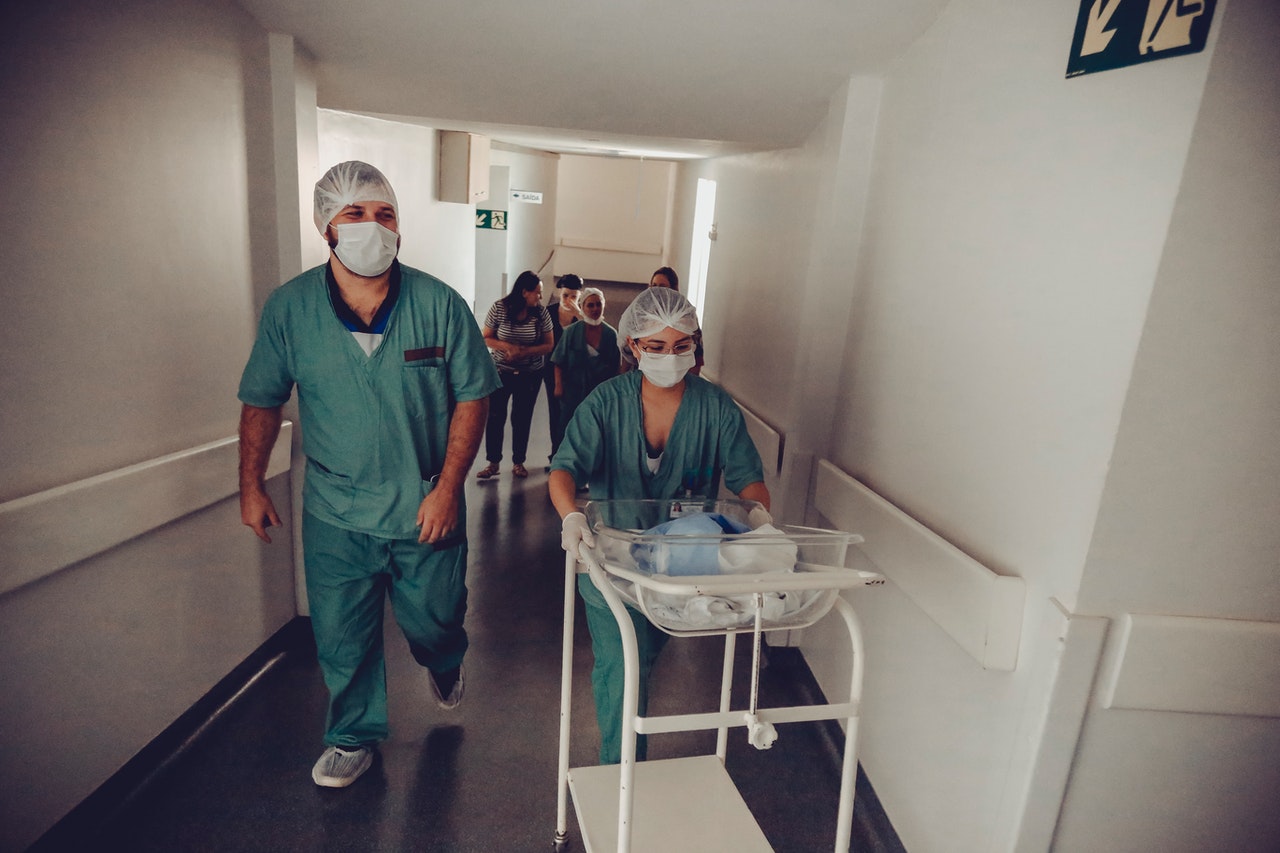
The new normal is upon us, and it’s drastically changing how we go about healthcare, interact with each patient, and even win back patients.
Now more than ever, we have to focus on patient satisfaction.
With so many changes upon us, we must learn how to lead in the new normal. It’s crucial now more than ever to give our leaders timely leadership education that will help them be agile leaders.
So how do we do that?
What Do We Need to Know to Lead in the New Normal?
1. Empathy
We need to teach our leaders how to provide caregiver empathy when so many of our staff suffer from COVID-19 fatigue.
Remember: staff members play a vital role in a hospital. To lead in the new normal and win back patients, you have to actively work to support your staff members, particularly during these challenging times. Learn more about the vital role staff members play in a hospital here.
2. Adjusting to Change
We are in an era now of constant, frequent, perpetual, radical change, and we need to teach our leaders how to gain buy-in from anybody or anything.
3. Agility, Influence, and Persuasion
We need to teach leaders agility, influence, and persuasion. These are the new skills in the new era of pandemics.
How to Gain a Buy-in From Anybody for Anything
The number one reason change initiatives fail is lack of buy-in. There are five steps to gain a buy-in. Here they are.
1. Conduct a subject briefing
Get your people together in a classroom. Spend 10-15 minutes with them and outline everything they need to know about how it works.
2. Buddy people up
After the briefing, pair up all the attendees. When you have a positive attitude and a negative attitude together in a buddy team, the positive attitude will always overwhelm the negative.
3. Assign a discussion
Have the buddies talk about three benefits of the new idea and one barrier.
4. Debrief
People start to buy-in when they begin to see new, positive benefits and realize that it will help them in their life. When the barriers come up, have them brainstorm right then and there on how to overcome that barrier.
5. Take action
When you’re done debriefing, talk about who will do what by when, and how.
Create a Five-Star Healthcare Experience for Everyone
Educate your brightest and best as outreach safety ambassadors. Johns Hopkins Medicine calls them Trusted Messengers.
If people aren’t coming to the hospital, you have to go to the community. Remember: people don’t trust hospitals and doctors, or less so than they did before.
We need to go where they are, and we need to get the message out. To lead in the new normal, we have to get out and let people know that we are their center of excellence. We are an oasis of kindness and healing.
Recruit your brightest and best frontline employees. Pick people with positive attitudes—people who will walk the talk and are passionate about the subject. In teams of four, have them go out and speak to churches and service clubs, and associations.
Think about three initiatives:
- Education of inspiration on how to win back patients
- How to lead in the new normal
- Creating a safe, five-star experience
Outreach Projects to Win Back Patients
1. Safety Ambassadors
Safety ambassadors could be physicians: advanced care practitioners, board trustees, or members of your patient-family advisory council.
2. Make Your Entryway Welcoming
Perception = deception. Remember, the way we see ourselves may not be the way our patients or customers see us. The old cliché is true: you never get a second chance to make a positive first impression.
Is your entryway a welcoming entrance or a barricade? Make the best of your current situation. Create a contest for the best, most creative mask, or the best, most creative badge. Anything that will make a patient’s entrance more welcoming.
3. Access
How easy is it for patients to navigate access?
Let’s begin with assuming your patients are “reluctant customers.” Unless they are coming to the hospital for a tummy tuck, a facelift, or to deliver a baby, they don’t want to be there.
Use photo badges and appoint a safe, simple, access task force. Put a team together representing admitting, ER, and other various departments.
4. Safety Culture Project
How difficult are you making it for patients to get onsite? Start a Safety Culture Project and teach sentence starters to everyone.
Begin with entrance greeters (not screeners). It could be as simple as saying, ‘welcome to our hospital; we’re so glad you’ve chosen the safest place in town for your care.”
5. Create a Video
Using just your smartphone, create a video. Get a team together of four or five frontline employees and create a video called “100 Reasons Why We’re the Safest Place in Town”.
Instead of downloading brochures and long lists of all the things you’ve done, have a fun three-minute video and post it on your website, on YouTube, on Facebook, on Instagram.
6. Virtual Safety Tour
Have your chief nurse officer record two or three minutes explaining why the place is safe. Post this on your website, Facebook, Youtube, Instagram, and any other socials.
Talk about the cleaning that you do, your outpatient services, and any new protocols.
7. Ask Patients About Their Visit
What if you asked every patient, “folks, thanks for choosing us; on the way out the door, we’d sure like to ask if you’d record a 30-second video. I’ll ask you a question about why you chose us and why you came back”.
Most people, when asked nicely, will say yes. This turns your patients into campaign workers for you. These will go viral in the community and go a long way to help you win back patients.
8. Ask for Referrals
Never underestimate the power of a patient referral!
If you're not asking for referrals, you're missing out on ways to improve both your hospital's reputation and intake. Referrals don't cost anything, and they're easy to do. For help on how to ask for a referral, check out this blog post.
Now let's go spread Kindness Care, Everywhere!
Reimagining Healthcare Engagement Summit
In June, we are holding a special one-day summit called “Reimagining Healthcare Engagement,” which will be 100% live streaming. Register to learn more about how to refresh the workplace through resilience, agility, and kindness.
Everyone’s a Caregiver: Providing Education for Healthcare Workers
Everyone's a Caregiver provides education to healthcare workers to better improve their patient's overall experience. We understand the time constraints placed in today's workplace and have customized microlearning videos to help you gain the skills you need to be a better, more positive healthcare worker. Contact us today to see how we can help, or click here to learn more.
If you are interested in patient care, check out these articles!
Why is Patient Satisfaction so Important?
Non-Verbal Communication is the Key to Great Patient Care
A Positive Attitude is Key to Great Patient Care
How to Win Back Every Single Patient
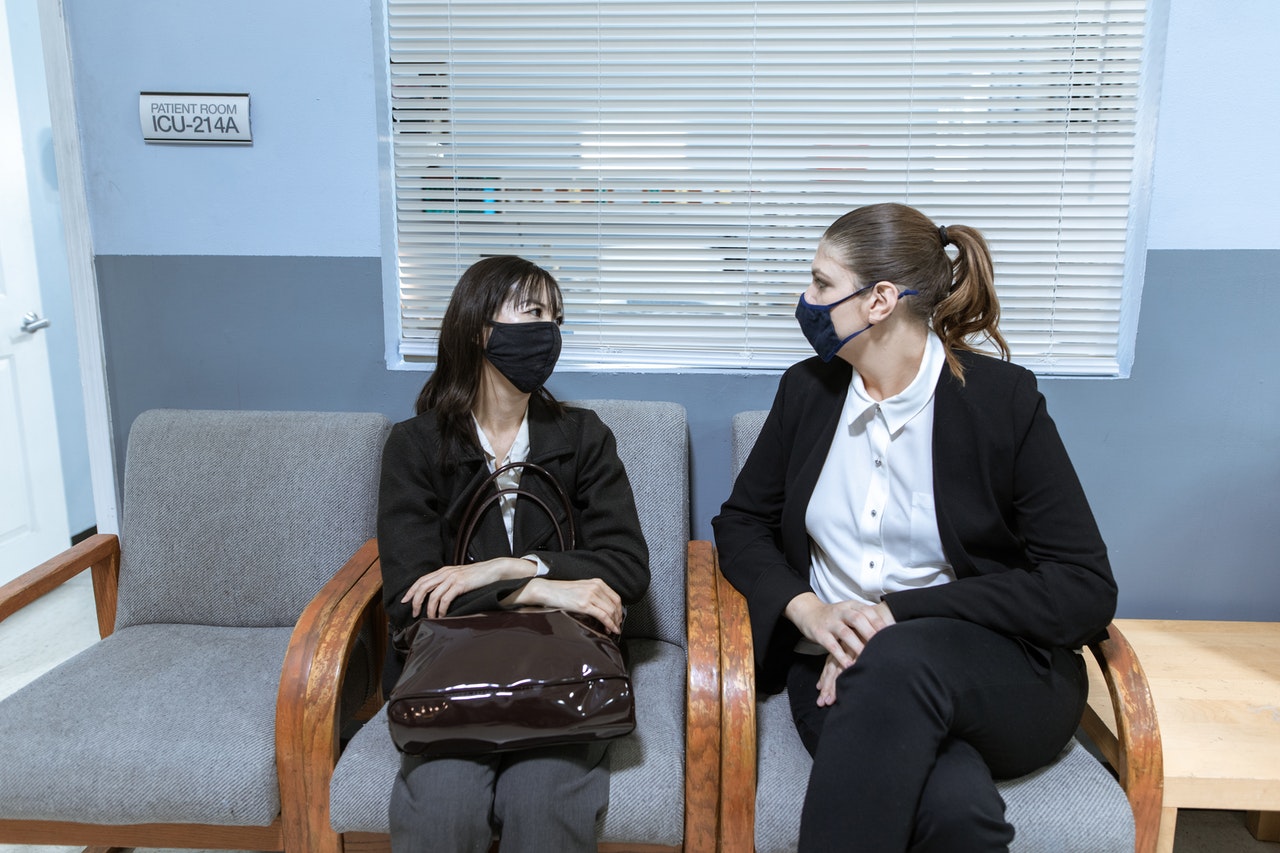
Do you know how to win back patients?
According to the Centers for Medicare & Medicaid Services, it costs seven times more to go out and get a new customer than it does to keep an existing one. CMS states that one patient is worth $3,047 a year, but the customer’s lifetime value is astronomical.
This is why we don’t want to lose patients. It’s also why it is so important to know how to win back every single patient.
To Win Back Patients, You Have to Shift Focus Back to the Patient
To win back patients in a hospital, you have to focus on patient satisfaction. But while it is vital to ignite caregiver engagement to create a 5-star patient experience, it is also crucial to reigniting caregiver engagement to win back every single patient.
There’s no doubting that COVID-19 has left everyone feeling stressed out about even stepping foot into a hospital. A study came out by the Alliance of Community Health Plans that said 42% of consumers feel uncomfortable going to a hospital for an in-person medical treatment, especially when there is a surge.
Patient satisfaction is vital to the success of a hospital (learn why here). This is why it’s time to shift focus back to the patient. It’s time to reignite your thinking, to reignite where you’re going, and to reignite the patient experience.
“You can’t go back and change the beginning, but you can start where you are and change the ending.” - C.S. Lewis.
Try to think about this journey in three steps.
- Mobilize response
- Fast track regaining lost ground
- Refocus on growth
The Reignite, Win Back initiative
To reignite is to reset our thinking.
It’s essential to start thinking about the concept of how to win back patients and educate your people on how to do that. Here are some tips.
Resilience and You
It all starts with you. Make a challenge to commit to being the best you can be because what is the alternative to being your best? It’s average. It’s mediocre.
It’s little things that count, whether it be getting your pain meds on time, getting timely test results, and more. Knowing what “excellent care” means to our patients is a huge thing. And a part of this care comes from mindful listening. This means honoring our patients by really listening to them.
Resilience is all about surviving and thriving. It’s also about inspiration.
Reputation Recovery
Reputation recovery is a great way to win back patients and should be a core capability.
It is paramount to be an active listener whenever you hear a complaint about your hospital’s service. Do not use those two killer words that ruin relationships “Yes, but…”.
There are two options when people have a complaint.
You can agree with them, hear them out, and say, “Wow, that sounds awful. I don’t blame you for being upset; I’d be upset too.’
But what if the complaint doesn’t sound right? What if your gut says it couldn’t have been that way? Let them be right. Allow them to retain their dignity by saying, “I can see why you feel that way” or “maybe you’re right.”
Then it’s time to pivot.
Say: “Have you been to the hospital lately? It’s a different place; it’s a better place.” “Would you like to come by for a tour?” “Would you like to come by for a coffee?” Would you like to come by and meet our Chief Nursing Officer?”. Whether they accept or not, the fact that you’ve invited them, the fact that you’ve honored them by hearing them out, you have become their referral source.
Is there any doubt in your mind that they will tell others about you and about this newfound discovery that your hospital is a better place?
What if every caregiver did this once a week? You’d be surprised by how far it can go in building a stunning new reputation. It’s like a Reputation Renaissance.
Here are a few essential things to do when it comes to Reputation Recovery:
- Make reputation recovery a core capability.
- Start a Chief Influence Officer (C.I.O.) club. We want to make everybody that works at your hospital a Chief Influence Officer. Make sure their primary focus is patient satisfaction.
Safety Culture
This pandemic has people worried and scared. People are afraid of in-person care. Firstly, we have to educate our phone reception, our ER, imaging, physician, lab, billing, and every other staff member.
Always tell the patient what you can do, not what you can’t do. It’s got to be about what is possible.
This is why sentence starts are so important. These are positive, constructive ways to communicate with your patients. They also go a long way with patient satisfaction.
Your greeters should be people who have a personality and have a welcoming name badge. They should also use AIDET.
AIDET is an acronym for Acknowledge the patient, Introduce yourself, Duration (tell them how long you’ll be with them), Explain what you’re doing to them, and Thank them.
How to Lead in the New Normal
We need to teach our leaders how to provide caregiver empathy when so many of our staff suffer from COVID-19 fatigue. We are in an era of constant, frequent, perpetual, radical change, and we need to teach our leaders how to gain a buy-in from anybody or anything. Then we need to teach them agility, influence, and persuasion. These are the new skills in the new era of pandemics.
Leaders should also fast-track a safe five-star experience for everyone.
Educate your brightest and best as outreach safety ambassadors. Recruit your brightest and best frontline employees. Pick people with positive attitudes - those staff members who have a kind of way about them and are passionate about the subject.
We want you to think about three initiatives:
- Education of inspiration on how to win back patients
- How to lead in the new normal
- Create a 5-star experience
Outreach Projects to Get the Community Back
- Create safety ambassadors
- Start a safety culture project teaching sentence starters to everyone.
- Do a virtual safety tour.
- Create videos asking patients why they chose you and why they would come back
- Hold a Customer Service Academy for everybody in your market area,
Our ‘Do it’ Recommendations
- Educate and empower everyone to serve as a Chief Influence Officer
- Charter an easy access task force
- Commit to excellence - learn one new idea every day and do it in a better way.
- Make reputation recovery a core capability.
- Fast-track a safety culture by the use of sentence starters.
- Unleash your trusted leaders to serve as Safety Ambassadors
- To win back patients, go out and speak in the community.
- Have a win-back marketing campaign.
Now let's go spread Kindness Care, Everywhere!
Reimagining Healthcare Engagement Summit
In June, we are holding a special one-day summit called “Reimagining Healthcare Engagement,” which will be 100% live streaming. Register to learn more about how to refresh the workplace through resilience, agility, and kindness.
Everyone’s a Caregiver: Providing Education for Healthcare Workers
Everyone's a Caregiver provides education to healthcare workers to better improve their patient's overall experience. We understand the time constraints placed in today's workplace and have customized microlearning videos to help you gain the skills you need to be a better, more positive healthcare worker. Contact us today to see how we can help, or click here to learn more.
If you are interested in patient care, check out these articles!
How to Ask for a Referral in Healthcare: The Power of Patient Referrals
Why All Hospital Staff Members Play a Vital Role in a Hospital,
A Positive Attitude is Key to Great Patient Care
Non-Verbal Communication is the Key to Great Patient Care

Non-verbal communication in a hospital is one of the best tellers of how a patient or caregiver is feeling.
This may come as a surprise to you. After all, how can you tell how a patient is feeling without talking to them? How can a patient read you or assume something about the level of your care if you’re not communicating verbally?
Well, it all comes down to the body.
When it Comes to Non-Verbal Communication, Your Body Never Lies
Non-verbal communication is key. Why? Because the body never lies.
That is the absolute key to non-verbal communication.
Remember: words make up 7 % of communication. Tone makes up 38 % and non-verbal cues make up 55 % of communication.
So how do we communicate other than the spoken word? We do this through:
-
Eye contact
-
Body language
-
Facial expressions
-
Smile
-
Clothing
-
Empathy
-
Non-verbal sounds
-
Appearance
-
Hair
-
Personal
-
Laughter
-
Tone of voice
-
Compassion
-
Attitude
The Importance of Understanding Non-Verbal Communication Cues
It is essential to both understand and educate yourself on non-verbal cues. These cues can offer all sorts of opportunities to connect and create a respectful relationship with hospital patients. Some of these cues include gestures, breath patterns, flushed faces, and dilated pupils
These cues all tell a story to a healthcare professional. They offer opportunities for us to understand how a patient is feeling.
Another crucially important non-verbal cue that you should always have on your mind is your touch. Do you have a caring touch?
A caring touch both communicates and reinforces caring feelings. A caring touch can include placing a hand over a patient's hand or gently placing an arm around a patient's shoulder.
Tactile contact also varies considerably among individuals and families. This is why it is important to be sensitive to differences in attitudes and cultural practices. You may notice that some families are touchy-feely while others aren't. These differences should govern how we communicate with our patients.
The Benefits of Non-Verbal Communication
As an essential element of patient care, non-verbal communication has many different benefits to both patients and healthcare providers. Some of these include:
-
Helps you become more aware when having conversations with patients
-
Increases intimacy
-
Improves empathy
-
Improves compassion
It All Starts With a Smile
Never underestimate the importance of a smile.
There are four ways, and only four ways, in which we have contact with the world. We are evaluated and classified by these four contacts: what we do, how we look, what we say, and how we say it.
Remember: Patients are always looking at us. They are watching and reading every breath and step we take. They are watching our body language, our non-verbal cues, the way we present ourselves, and everything in between.
Our ‘Do it’ Recommendations
1. Remember that your patients are always watching and reading you from the moment you enter the room.
2. Be sure to read your patients.
3. Give information to patients in terms and language they can understand.
Now let's go spread Kindness Care, Everywhere!
Everyone’s a Caregiver: Providing Education for Healthcare Workers
Everyone's a Caregiver provides education to healthcare workers to better improve their patient's overall experience. We understand the time constraints placed in today's workplace and have customized microlearning videos that can help you gain the skills you need to be a better, more positive healthcare worker. Contact us today to see how we can help, or click here to learn more.
If you are interested in patient care, check out these articles!
Why All Hospital Staff Members Play a Vital Role in a Hospital
A Positive Attitude is Key to Great Patient Care
Why is Patient Satisfaction So Important
How to Ask for a Referral in Healthcare: The Power of Patient Referrals

Do you know how to ask for a referral?
If you don’t, you could be missing out on ways to improve your hospital’s reputation and intake.
Referrals are a powerful thing. Think about how patients choose hospitals. How do you think patients are choosing your hospital? Are your patients and their families telling the story of their stay?
People ask for referrals for all kinds of purchase decisions, including:
-
Lawyers
-
Physicians
-
Plumbers
-
Electricians
-
Restaurants
-
Car dealerships
-
Colleges
-
TV series
-
Financial planners
-
Realtors
-
Dentists
You yourself have likely asked for referrals for some of the above before making your own purchase decisions. You have likely also read the reviews, comments, and ratings of some of the above professions as well.
Do you like to look up hotels where you will stay, restaurants where you will dine? These are all forms of referrals.
Never underestimate the importance of referrals.
Here is How to Ask for a Referral
Referrals don't cost anything. Remember: people always know someone who can benefit from the services you provide. Referrals can lead to more referrals and bring your hospital more patients. This is why it is imperative to know how to ask for a referral properly.
It’s also important to remind people to spread the good word about the work that you do. You must ensure that patients receive the kindest, most personal care so that their referral is going to be positive.
Here are some great sentence-starters to use when asking for a referral. As patients thank you for their stay and are preparing to leave, consider saying the following:
-
“I am so pleased to hear you say we kept you comfortable. We’d be grateful if you’d share your experience with family and friends.”
-
“Would you do us a favor and tell them when you get home?”
These types of comments remind people to spread the good word about the good things that you do.
Why People Like to Give Referrals
People love giving referrals. It gives them the opportunity to brag about the service they got. When someone gets great service, they feel very thankful and feel that the company deserves to be rewarded for the service they provided.
People like to give referrals for the following reasons:
-
They were satisfied with the service and care provided and want to tell people about it.
-
They feel flattered by the great service they received.
-
They like giving their opinions.
-
They liked the people who provided them with great service.
-
They like being “in the know.”
-
Referrals make people look like experts.
-
Referrals benefit peoples’ friends.
-
Referrals are a great way to ‘pay it forward.’
To Summarize
At the end of the day, rather than worry about patient happiness, focus on:
-
Patient comfort
-
Patient participation
-
Patient education
-
Patient healing
By focusing on all of the above, your patients will speak vigorously about their stay with you.
To better understand how to ask for a referral and how to approach customer service, check out the book Raving Fans: A Revolutionary Approach to Customer Service.
Our ‘Do it’ Recommendations
To personally clarify the importance of referrals in your life, ask and answer the following three questions:
-
What products and services do you like to obtain referrals for?
-
Why do you like to give referrals?
-
When and how would you ask patients for a referral to your hospital?
Everyone’s a Caregiver: Providing Education for Healthcare Workers
Everyone's a Caregiver provides education to healthcare workers to better improve their patient's overall experience. We understand the time constraints placed in today's workplace and have customized microlearning videos that can help you gain the skills you need to be a better, more positive healthcare worker. Contact us today to see how we can help, or click here to learn more.
Why All Hospital Staff Members Play a Vital Role in a Hospital

Each member of a hospital staff plays a huge role in how a hospital functions. They also all play a huge role in patient satisfaction.
HCAHPS scores are a direct result of how patients feel - and whether you’d like to believe it or not, all hospital staff members can affect these scores.
This is why it is important to take ownership of patient satisfaction, regardless of the position you hold at a hospital.
All Hospital Staff Members Are Caregivers
When you’re asked what you do, how do you answer?
Do you say:
- “I’m a caregiver”
- “I help patients get well”
- “I work in healthcare as an IT professional and keep our computers running”
Everyone is a caregiver. There are those who serve the patients, and those who serve the patients. In order to succeed in our HCAHPS scores, it is crucial that we all see ourselves as caregivers.
“We must become the change we want to see in the world”
- Gandhi
The only significant power we have to effect change is through example.
The Patient’s Perception
A patient’s perception of their experience is based on a nurse's timely, empathetic response to call lights as well as timely supportive help to the bathroom.
But did you know that this perception is based on the responsiveness of so many other staff positions? In fact, a patient’s perception likely includes anyone who comes to their room.
This is because most patients think that anyone in scrubs is a nurse. This means that members of the dietary staff, a housekeeper, a phlebotomist, or any other staff members, are often mistaken for nurses.
HCAHPS caregivers include but are not limited to:
- Nurses
- CNAs
- Physicians
- Hospitalists
- Pharmacy
- Unit secretary
- Receptionist
- Housekeeping
- Lab
- Dietary
- Physical therapy/OT
- Imaging
- Transporters
- ER
- Business office
- Maintenance
It is vital to remember that a patient's perception of responsiveness includes interaction with every hospital staff member they have interacted with. This can include telephone reception, engineers fixing an elevator, a maintenance worker, a transporter, a doctor, a radiology technician, and everything in between.
The Takeaway
- Never make a patient feel like a number.
- Empathetic, timely responsiveness is CRITICAL.
- Everyone is a caregiver.
All members of hospital staff are caregivers, whatever the role is. If you work in a hospital, you are a caregiver.
We are also all first responders. We all have an opportunity at some point to respond to a patient or those who serve the patient. Responsiveness means all hands on deck. You don't have to be a clinician to respond with kindness and a servant's heart to a patient or family in need.
Think of yourself as revolutionaries on the front looking after patients. Always provide empathy and timely service to patients and their families. Gracefully fulfill their requests.
Our ‘Do it’ Recommendations
- Honor and recognize every team member as a caregiver whether they are at the bedside or not.
- In one sentence or less, describe and clarify how you make a difference as a caregiver to either the patient or to those who serve the patient
- Cultivate a vision to see yourself and all of your peers as First Responders.
Everyone’s a Caregiver: Providing Education for Healthcare Workers
Everyone's a Caregiver provides education to healthcare workers to better improve their patient's overall experience. We understand the time constraints placed in today's workplace and have customized microlearning videos that can help you gain the skills you need to be a better, more positive healthcare worker. Contact us today to see how we can help, or click here to learn more.
A Positive Attitude is Key to Great Patient Care

How do you focus on achieving a positive attitude?
Your attitude affects every single aspect of your life - from your personal life to your professional life, to the lives of the patients you take care of.
Ask yourself the following questions:
- Does your attitude change from day-to-day?
- Is your attitude the type of attitude that people want to be around?
- If attitude was contagious, would you want anyone to catch yours?
These are all vital questions you should be asking yourself, especially if you are in the healthcare industry.
This quote from Nobody's Home: Candid Reflections of a Nursing Home Aide by Thomas Edward Gass hones in on the importance of having a positive attitude in healthcare:
“Based upon our attitude we can either bring Joy or Misery.”
The book highlights the fact that attitude is a vital aspect of almost everything we do. In fact, every question we ask a patient has some root in a positive attitude.
Remember: Attitude is contagious. It affects and impacts everyone around you. Think about what it is like to be around a grouch. When you’re around a negative person, does it lift you up, or bring you down?
In most cases, it will bring you down.
Not everyone shares the same level of positive attitude and engagement like you. Keeping this in mind, here are five attitudes of engagement at a hospital.
The Importance of a Positive Attitude: 5 Attitudes of Engagement at a Hospital
- Superstars: 3% of the workforce. They will always rise to the top
- Winners: 20% of the workforce. They come in early, stay late, and have a desire to contribute. They want to get ahead and make a difference
- Grinners: Over 50% of the workforce. These employees just get by. They are there for a paycheck and typically just sit on a fence. Leadership and coaching are vital for Grinners.
- Whiners: 25 % of the workforce. They do as little as possible and always want something for nothing. They have toxic attitudes with co-workers and/or patients.
- Slugs: 2-10 % of the workforce. Slugs are counterproductive. Management keeps them around because they don't want frontline staff to work short, but they shouldn't really be there. These people are negative and have a bad work ethic.
Ask yourself:
- Which attitude do you think you show?
- Which attitude would your peers say you represent?
- What is the best way to communicate with each of the five attitudes?
Attitude Matters
Remember: Attitude always matters.
No patient or co-worker wants to be around someone who is negative, or worse, indifferent. Does a negative attitude serve you well? Does it serve anyone well?
A negative attitude will bring people down, and the type of attitude you have - whether negative or positive - has a domino effect. When you are positive, it shines a light on you and everyone around you.
“Brighten the corner where you are.”
How would you gauge your attitude? How would other people rate your attitude on a scale of one to ten? These are all important questions to ask yourself, especially when working in healthcare. This is because, in a hospital environment, your attitude can have a direct impact on patients as well as coworkers.
If someone around you is negative, don’t let that negativity consume you. You cannot let the things that you can’t control interfere with the things that you can control.
Focus on creating a positive attitude and making a difference with each and every single patient you interact with. Bring a light and shine it wherever you are, because at the end of the day, making a difference is up to you.
Our ‘Do it’ Recommendations
- Please state a recent example of how you maintained a positive winner’s attitude when in a difficult situation with a patient or team member
- Describe the positive outcome achieved as a result. How did it feel?
Everyone’s a Caregiver: Providing Education for Healthcare Workers
Everyone's a Caregiver provides education to healthcare workers to better improve their patient's overall experience. We understand the time constraints placed in today's workplace and have customized microlearning videos that can help you gain the skills you need to be a better, more positive healthcare worker. Contact us today to see how we can help, or click here to learn more.
Why is Patient Satisfaction so Important?
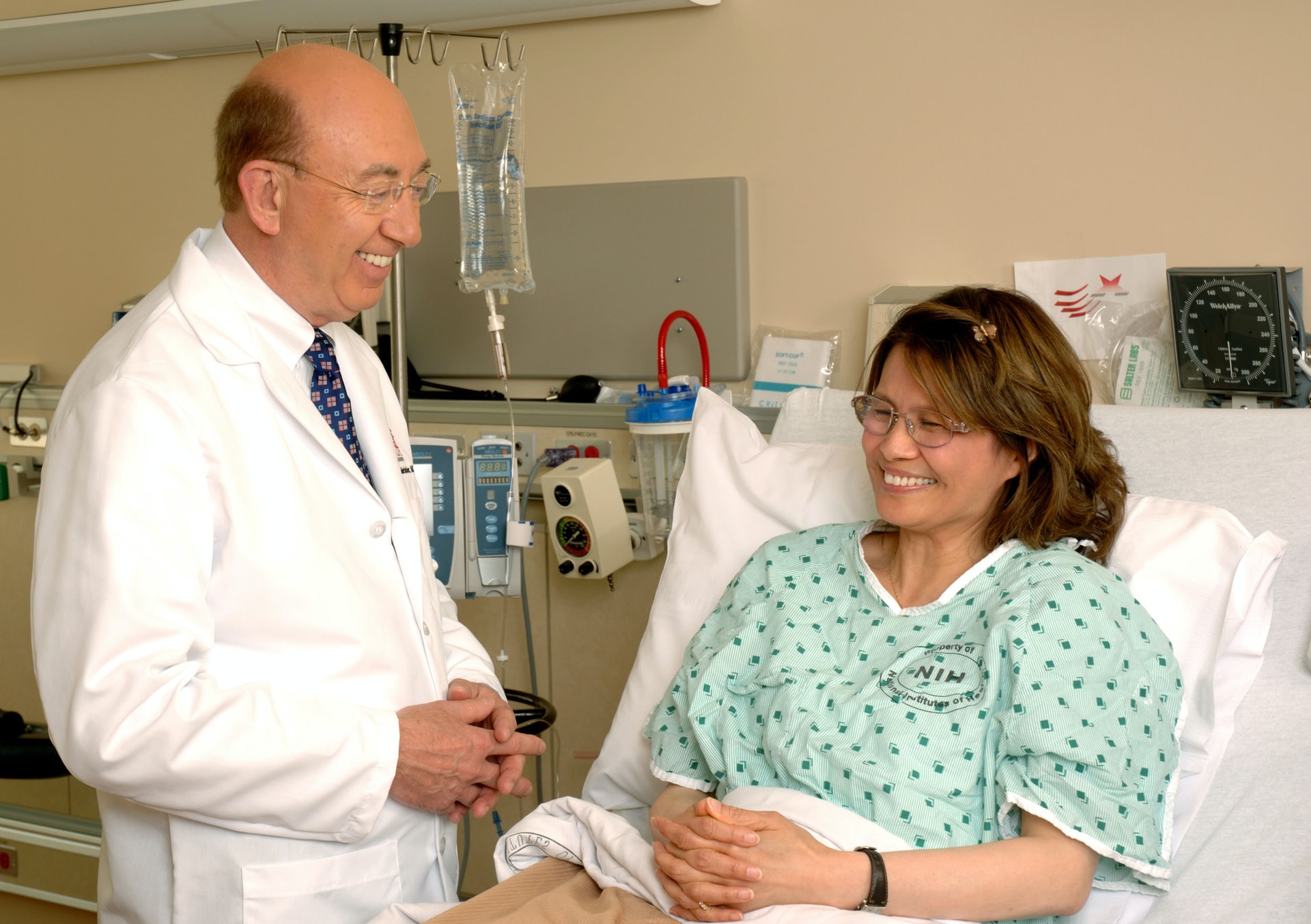
Did you know that patient satisfaction not only helps patients recover, but also enhances employee morale and even creates job security?
It's also a huge factor for a hospital's well-being
When a hospital has great client satisfaction, it improves every aspect of the hospital - from the hospital’s community, to patient happiness, to the well-being and mental health of hospital staff, and more. When the patients are happy, the employees are happy, and vice-versa. This results in a positive environment that helps make hospitals more competitive, and ultimately, more profitable.
Client satisfaction is so much more than just providing great care. It’s the right thing to do.
In healthcare, patient satisfaction is often a good indicator of the quality of care that is provided. Not only does it affect patient retention, but it also affects clinical outcomes, medical malpractice claims, and more.
Here are a few reasons why patient satisfaction is so important, and how you can do a part in providing great healthcare to improve client satisfaction.
What is Your Personal Mission?
When it comes to patient satisfaction, what is your personal mission?
One of your core and true missions should be to provide loving and compassionate care for every patient with no exceptions.
Patient satisfaction is an indicator of the type of treatment a patient is receiving and how well they are being treated. It is also an indicator of how satisfied the patient is about the treatment they are receiving. This measure of care quality gives us valuable insights into aspects of our job and allows us to understand the effectiveness of our care as well as of our own level of understanding.
When it Comes to Client Satisfaction, Personal Engagement is No Longer an Option
“It doesn’t take an instant more, or cost a penny more, to be empathetic than it does to be indifferent.”
- Brian Lee
Personal engagement is no longer an option. Without it we can improve the patient experience, clinical outcomes, hospital readmissions, hospital-acquired infections, and more.
It is crucial that we use personal engagement in our work to increase patient satisfaction and get the results we want.
If you do not use personal engagement every day, patients will not comply as they should. A lack of personal engagement and empathy does not provide a safe place for patients. If we don’t personally engage ourselves in work, patient satisfaction will go down.
The Right thing to Do
Being personally engaged with your patients is the right thing to do.
Our own personal engagement is evidence of our desire to serve others and to help others. Patient satisfaction not only improves a patient’s stay, but it also enhances job satisfaction for the staff treating these patients.
There are many reasons why patient satisfaction is important, and there are many reasons why we should try our absolute best to improve patient satisfaction. Here are some reasons.
- Our community deserves it
- It makes patients happier
- Enhance job satisfaction and employee morale
- Creates job security
- Helps us grow our market share
- Makes us more competitive
- Makes us more profitable
- It’s the right thing to do.
Never Underestimate the Importance of Patient Satisfaction
Patient satisfaction is one of the most important parts of health care.
It is important for a number of reasons. Not only is it important from a business standpoint, but it also improves a patient's life and health. Patient satisfaction attracts new patients, builds loyalty, improves clinical outcomes, and even minimizes the risk of litigation.
Patients who are satisfied with their health care are more likely to tell others about their experience. They are also more likely to come back to the same facility.
To improve customer satisfaction, be sure to focus on:
- Reducing wait times
- Learning technology
- Fostering communication
- Giving patients the option of filling out a satisfaction survey at the end of their stay
Our ‘Do it’ Recommendations
1. Write down 3 reasons why customer satisfaction is important to you.
2. Seek every opportunity to proudly share these reasons with your patients and team members.
Everyone's a Caregiver provides education to healthcare workers to better improve their patient's overall experience. We understand the time constraints placed in today's workplace and have customized microlearning videos that can help you gain the skills you need to be a better healthcare worker. Contact us today to see how we can help, or click here to learn more.